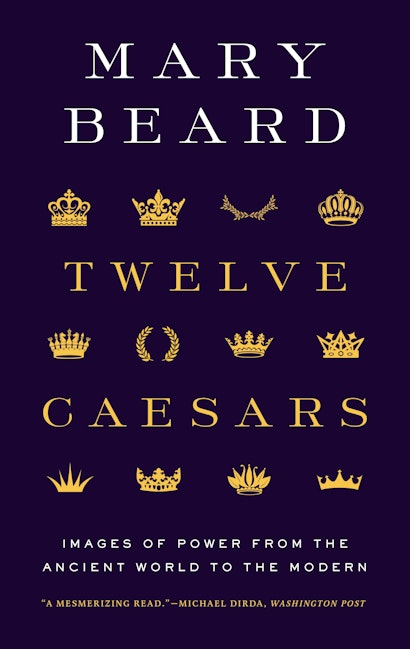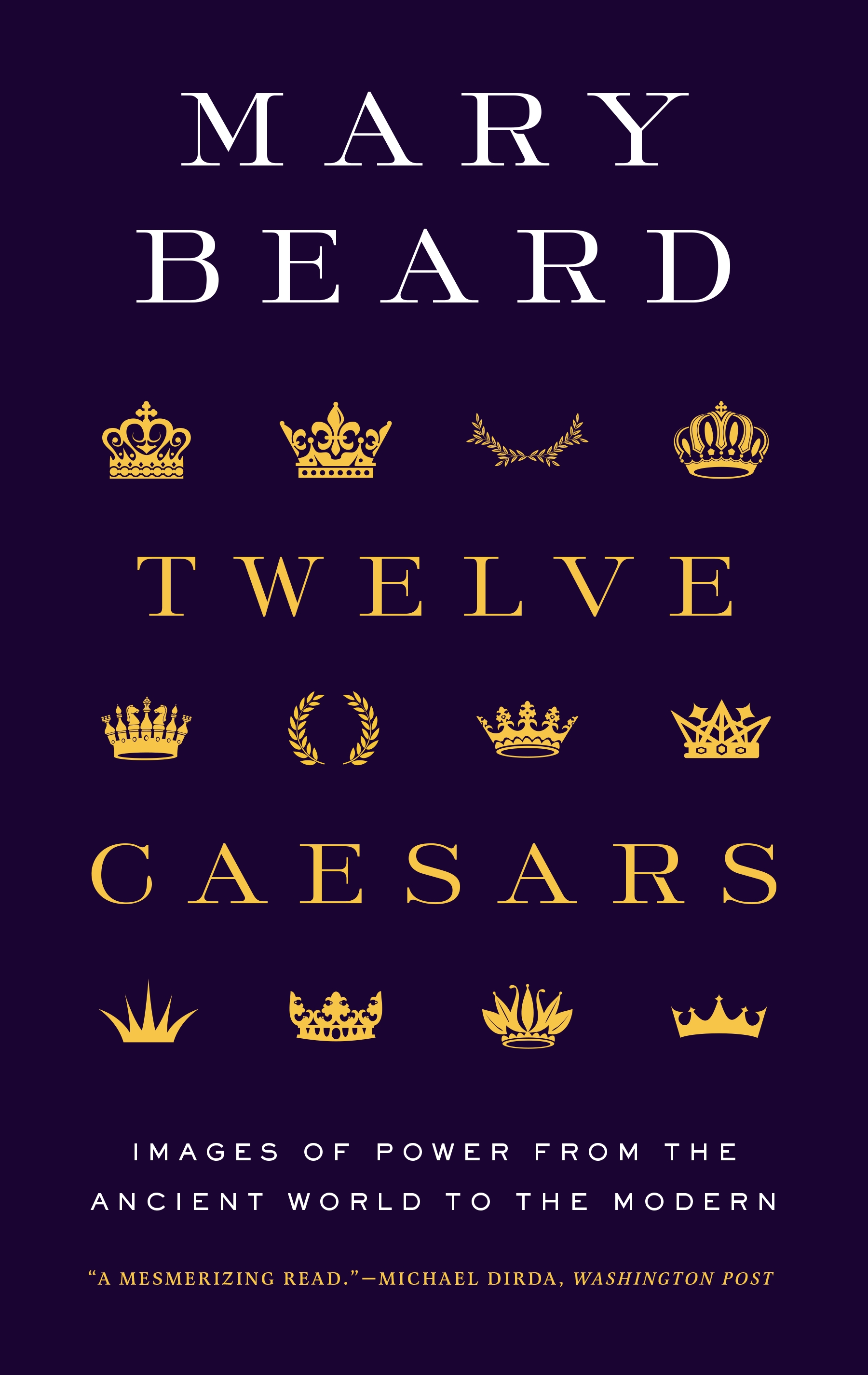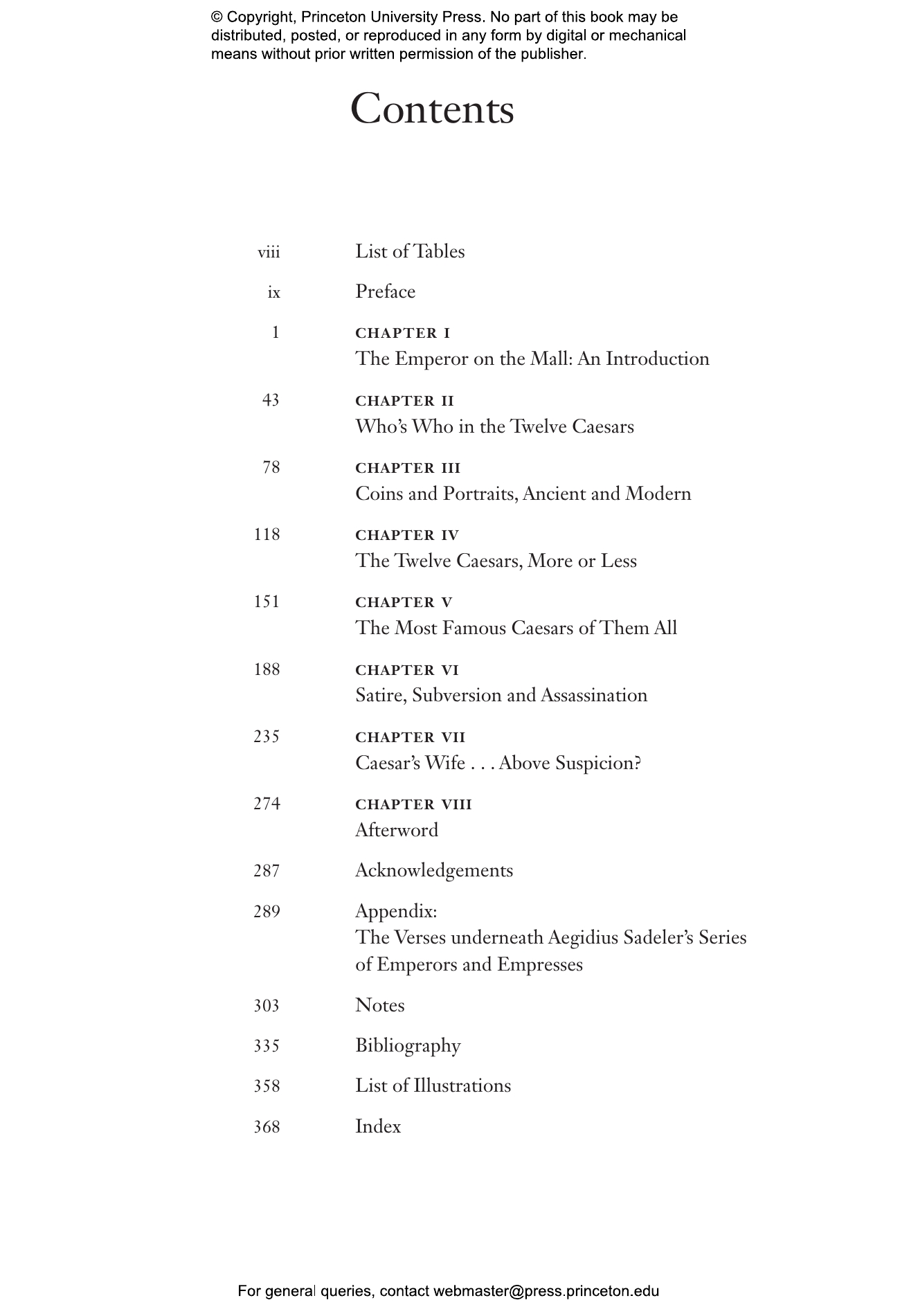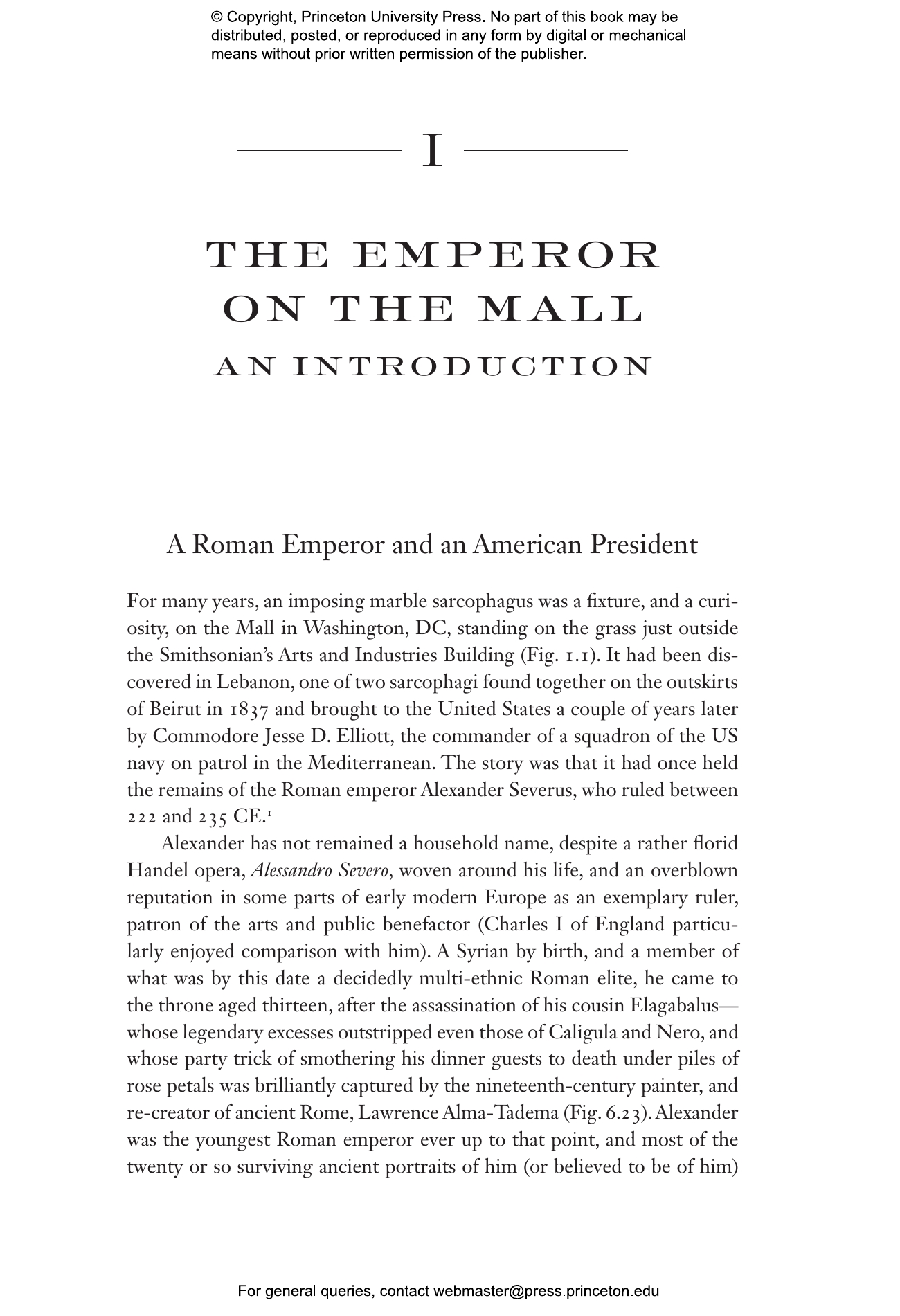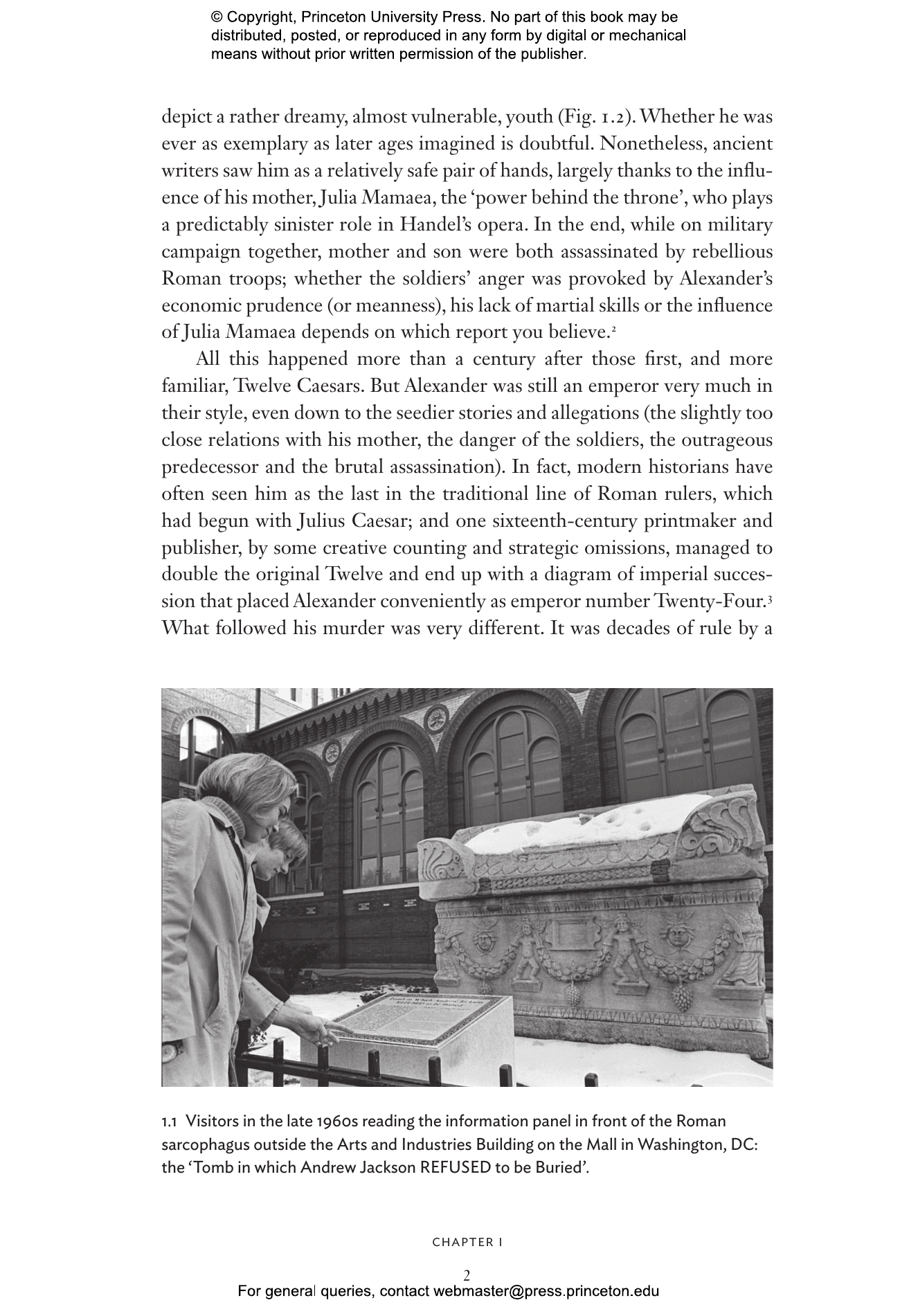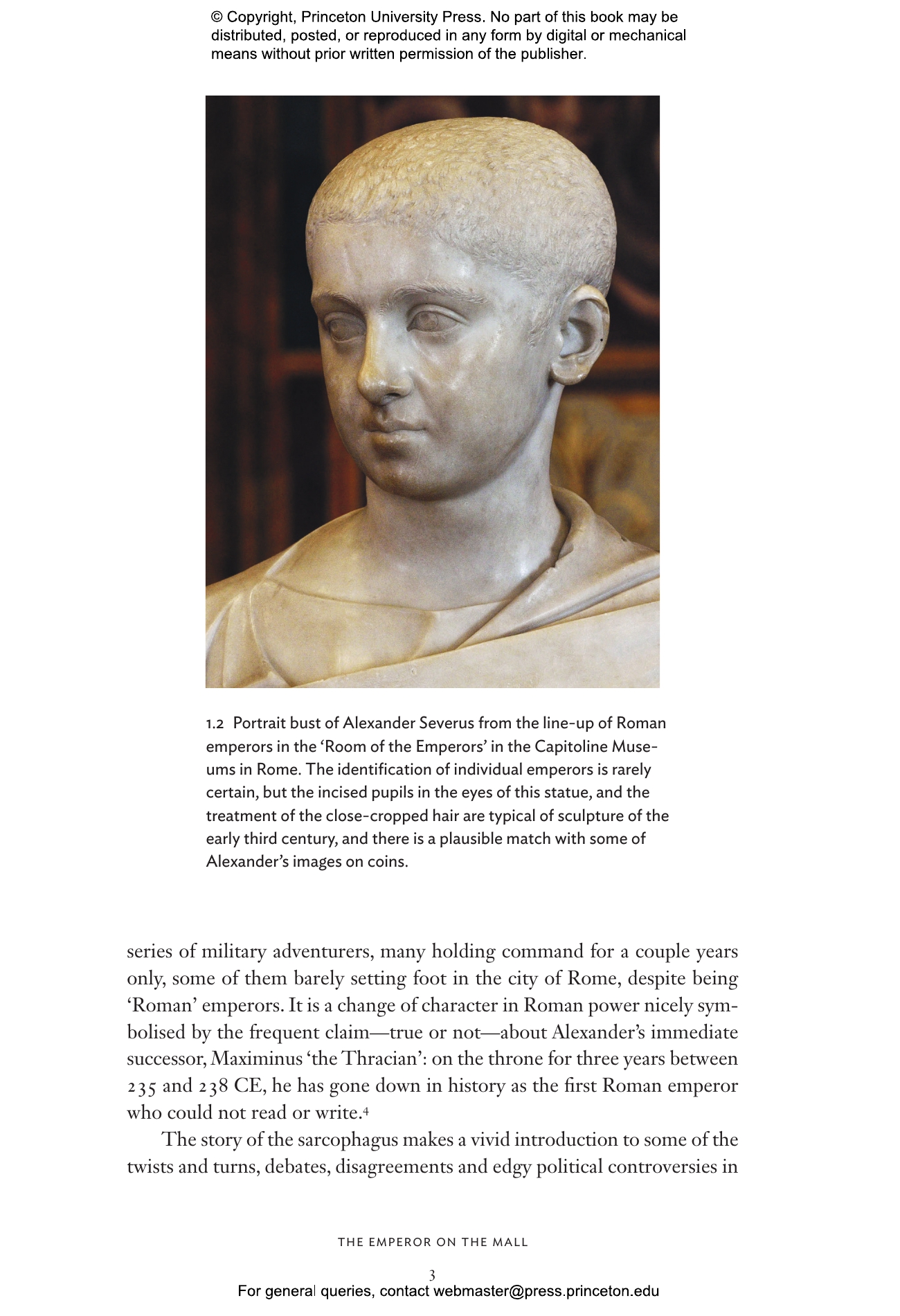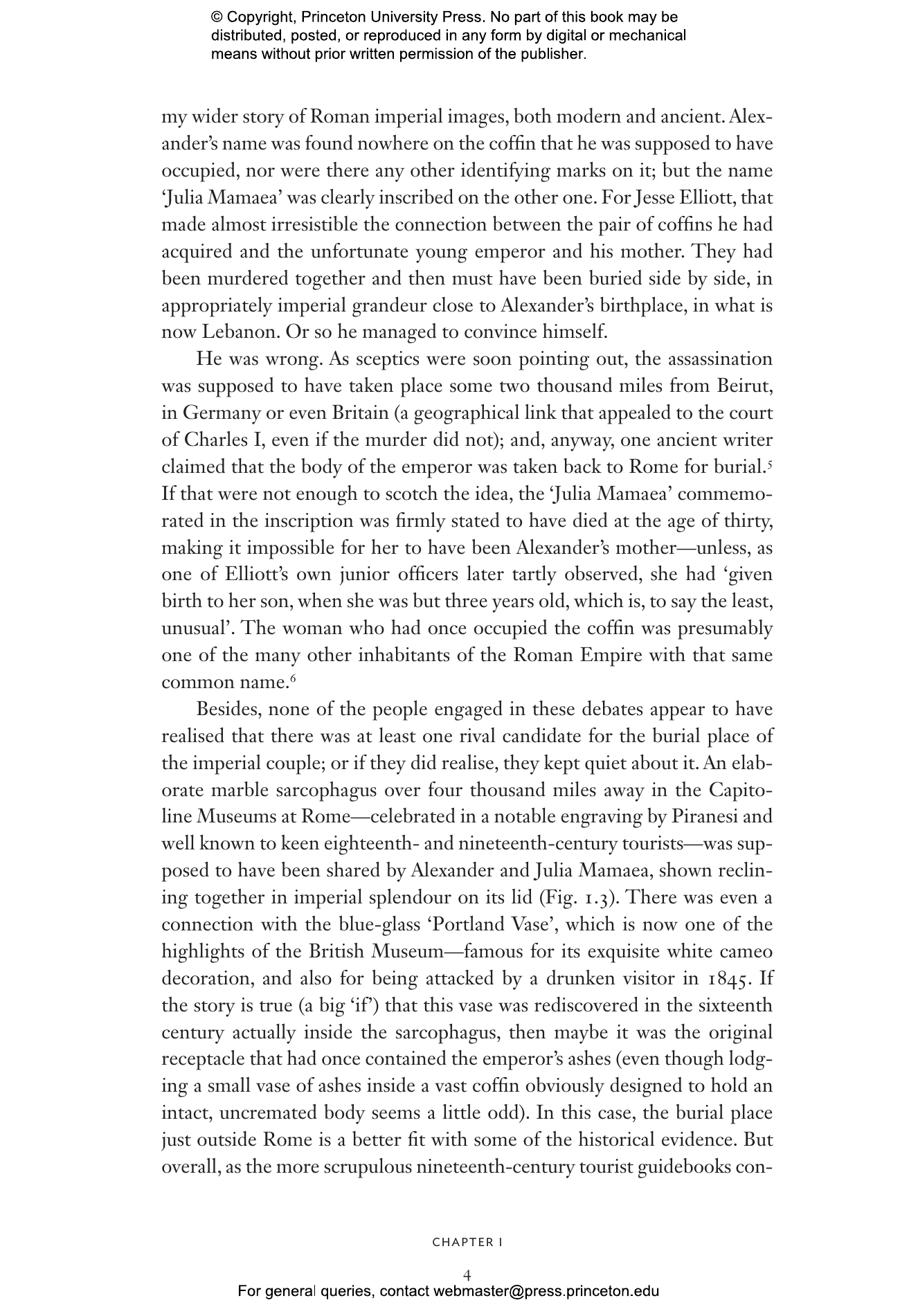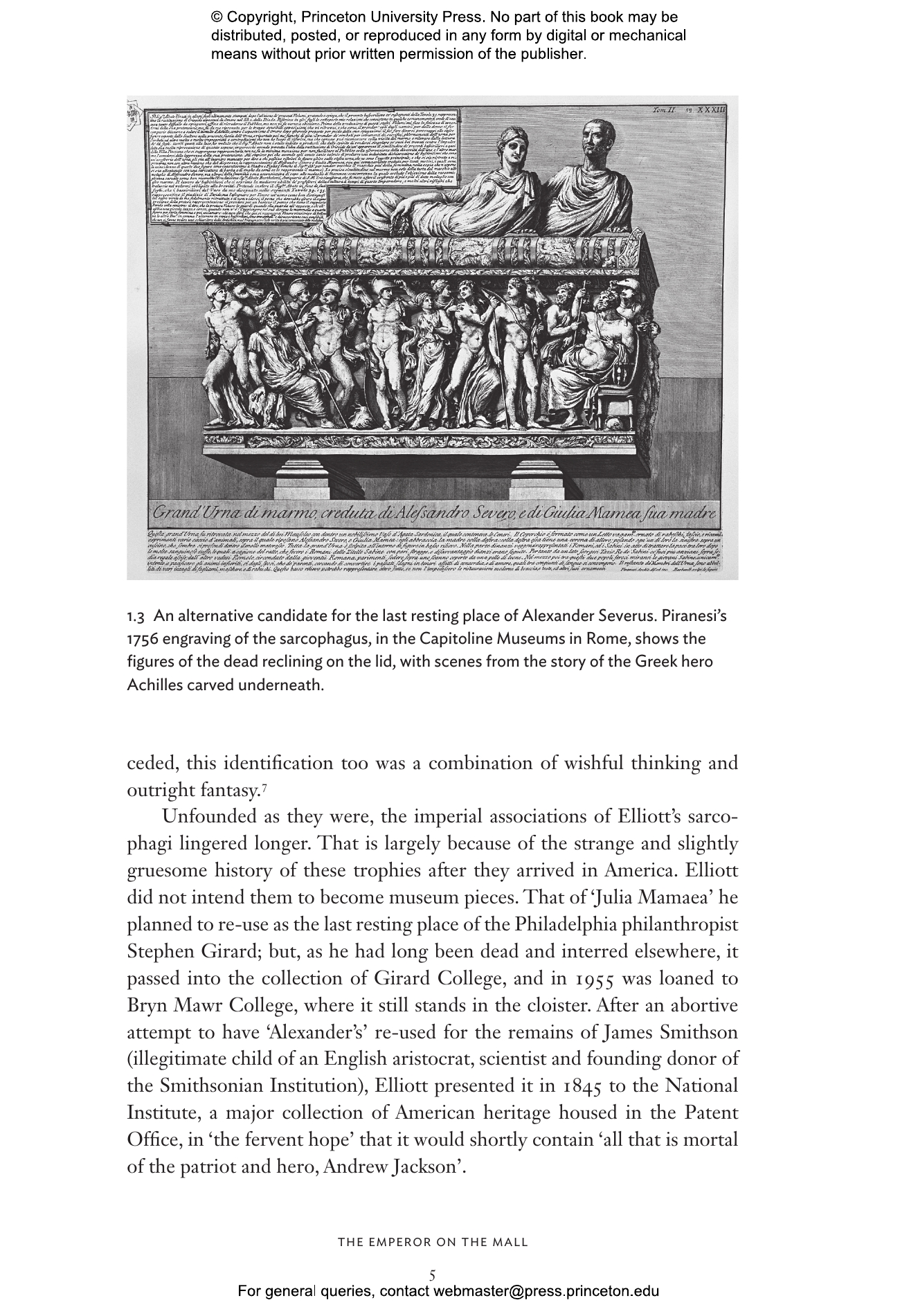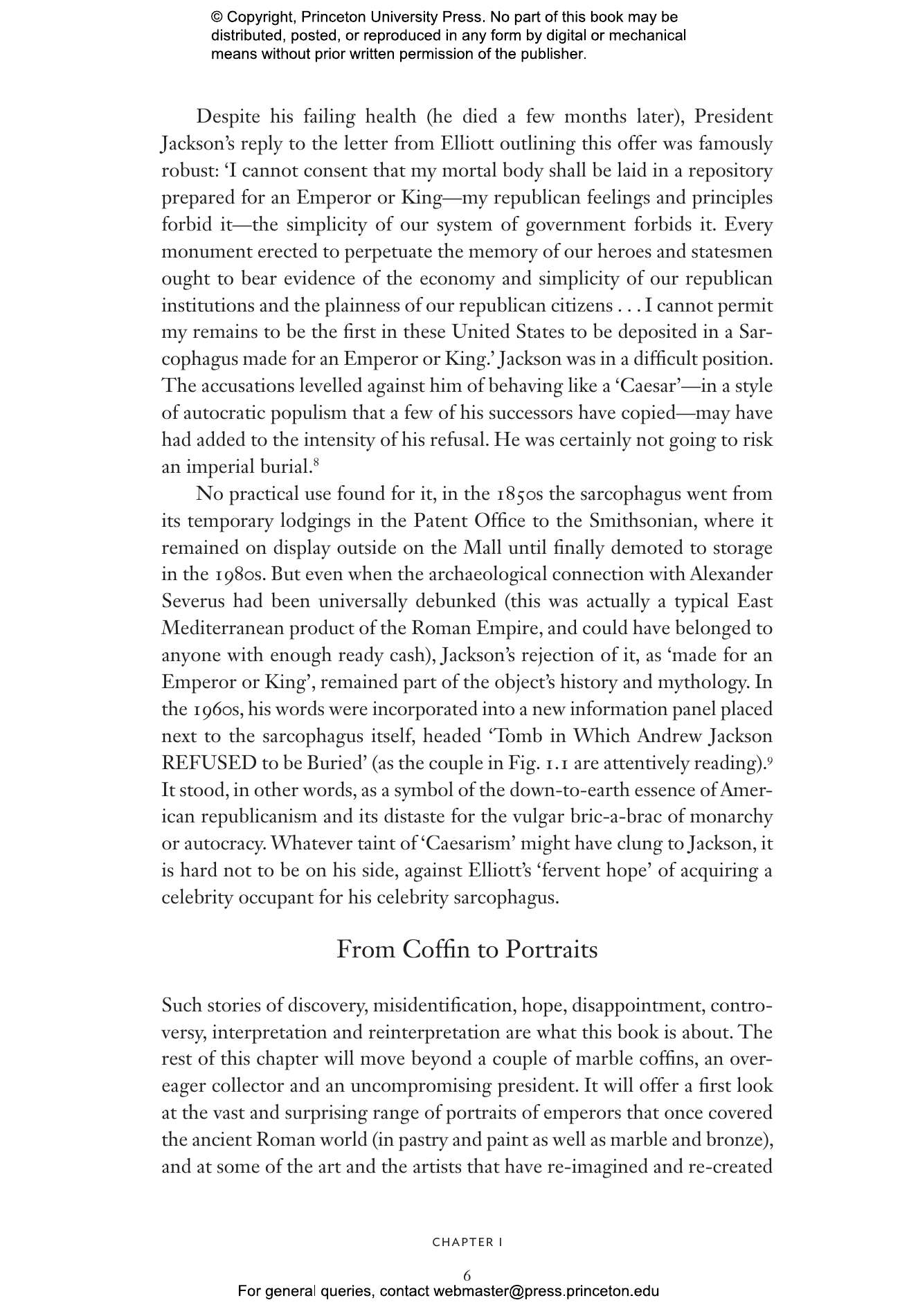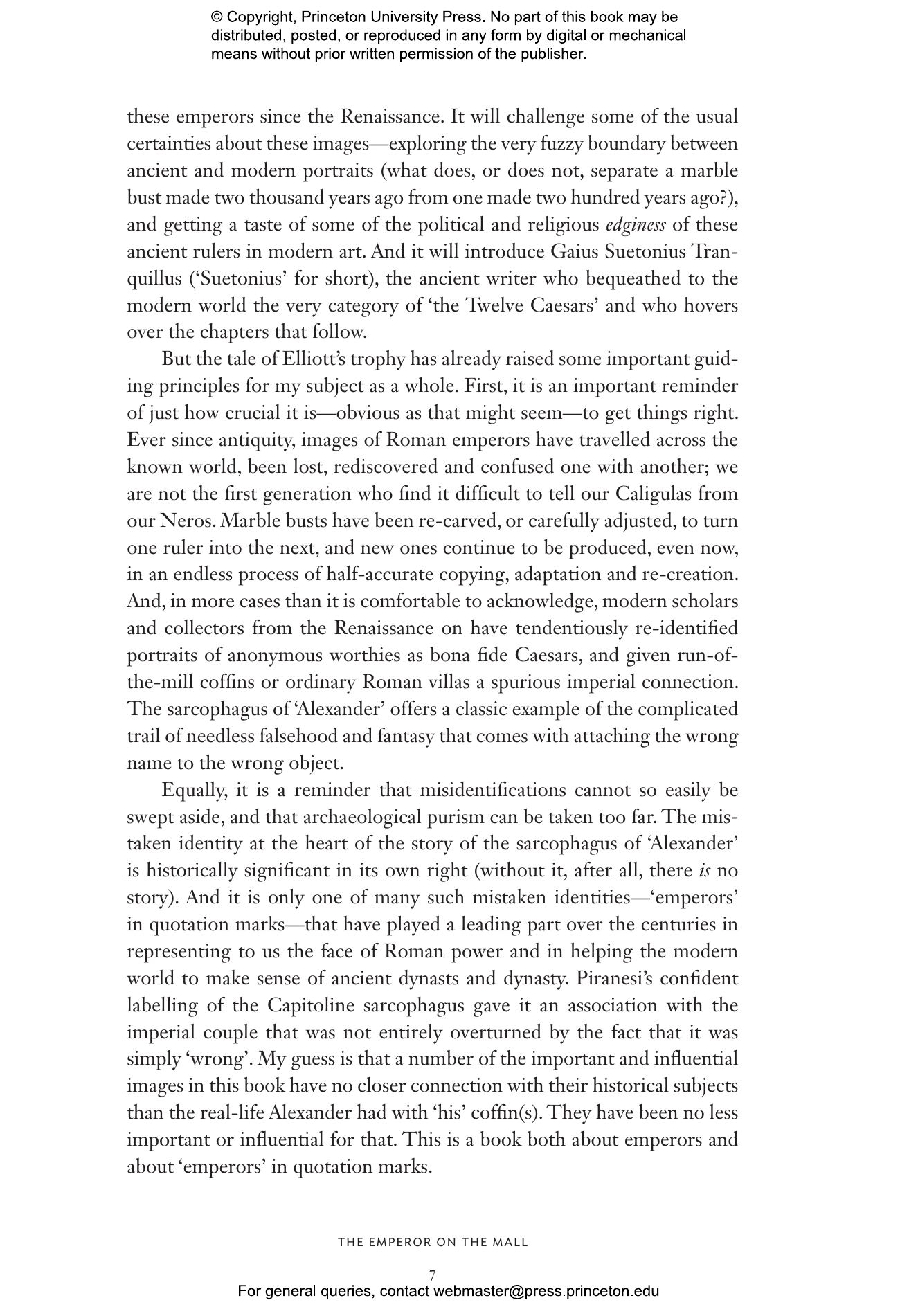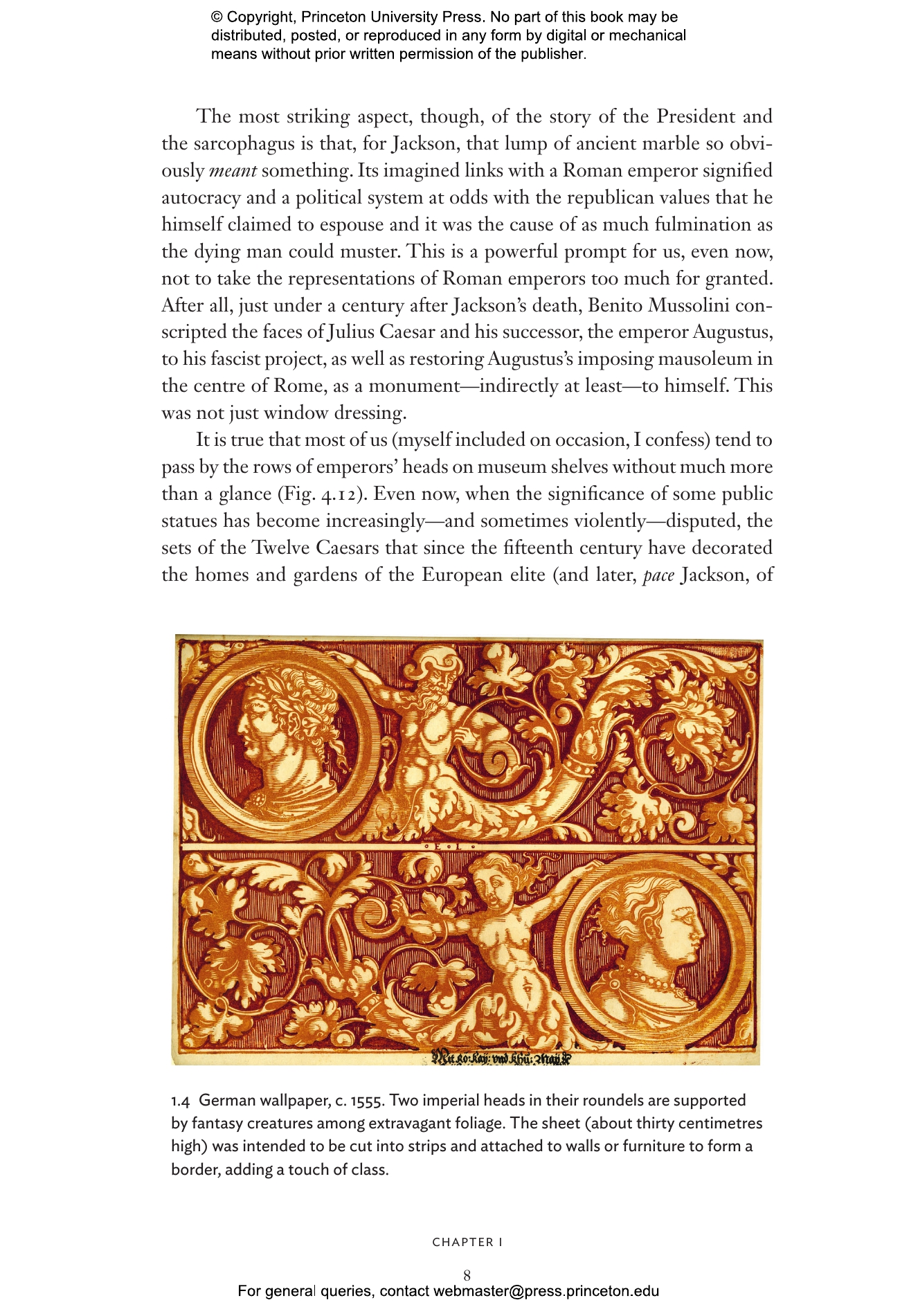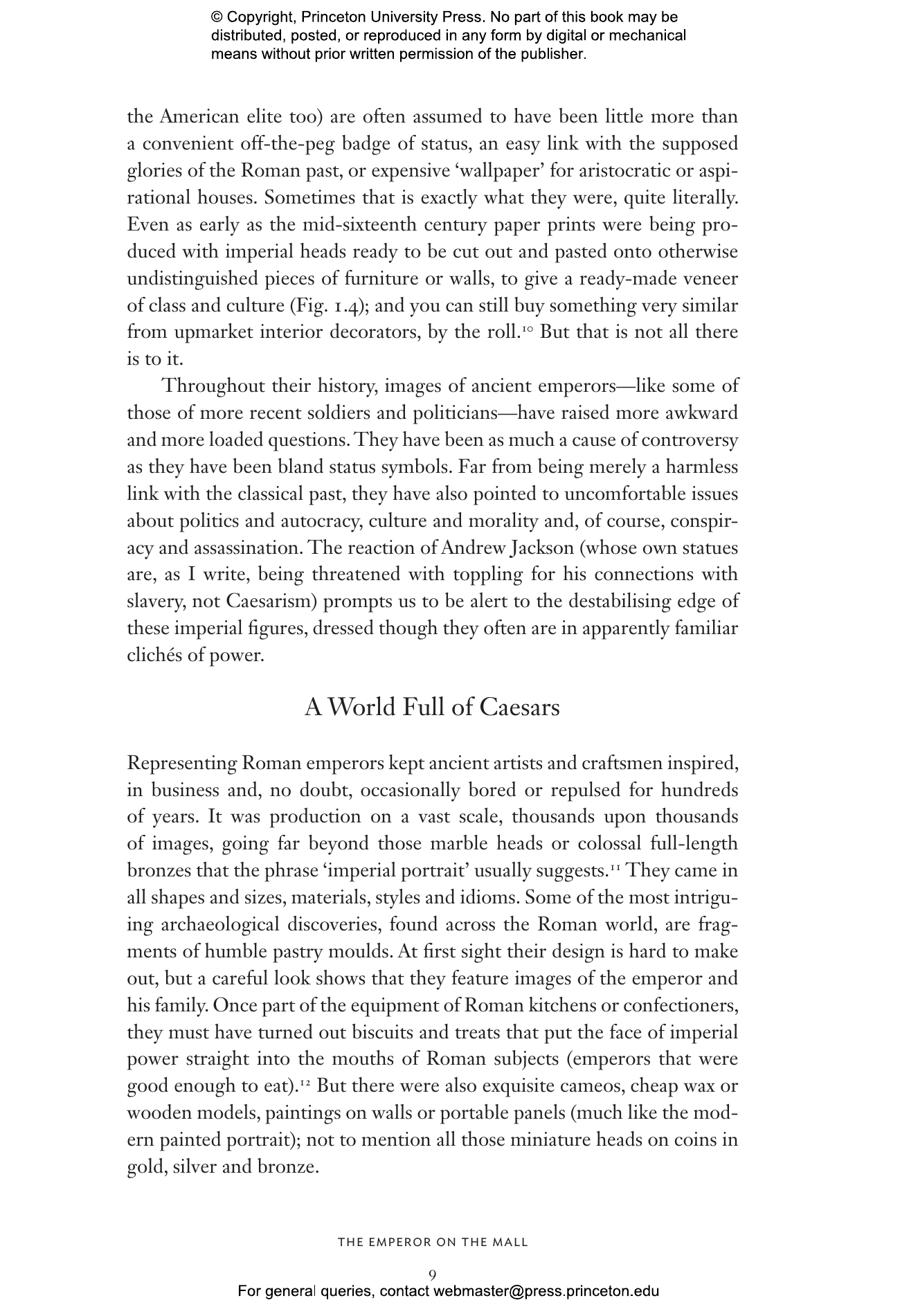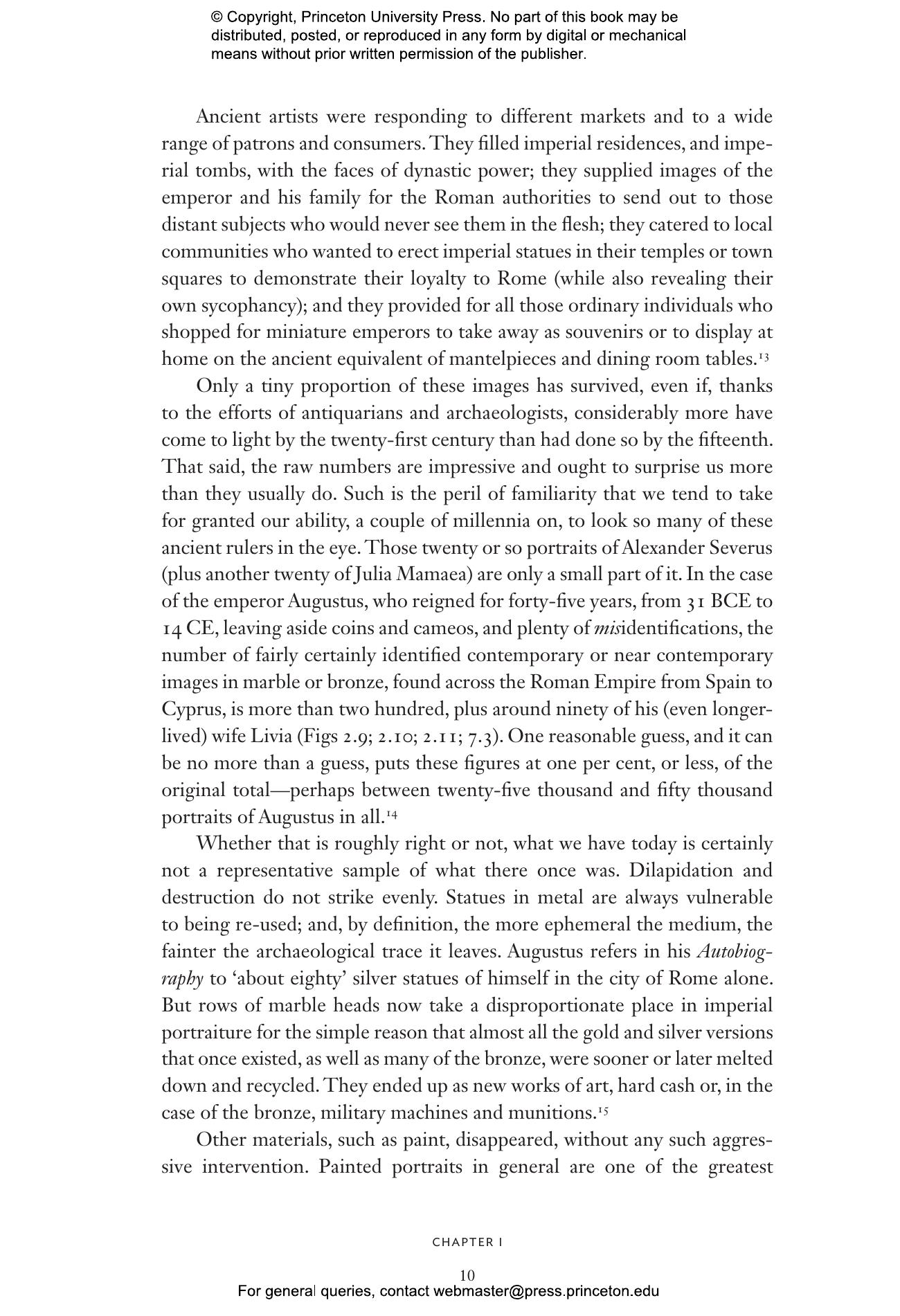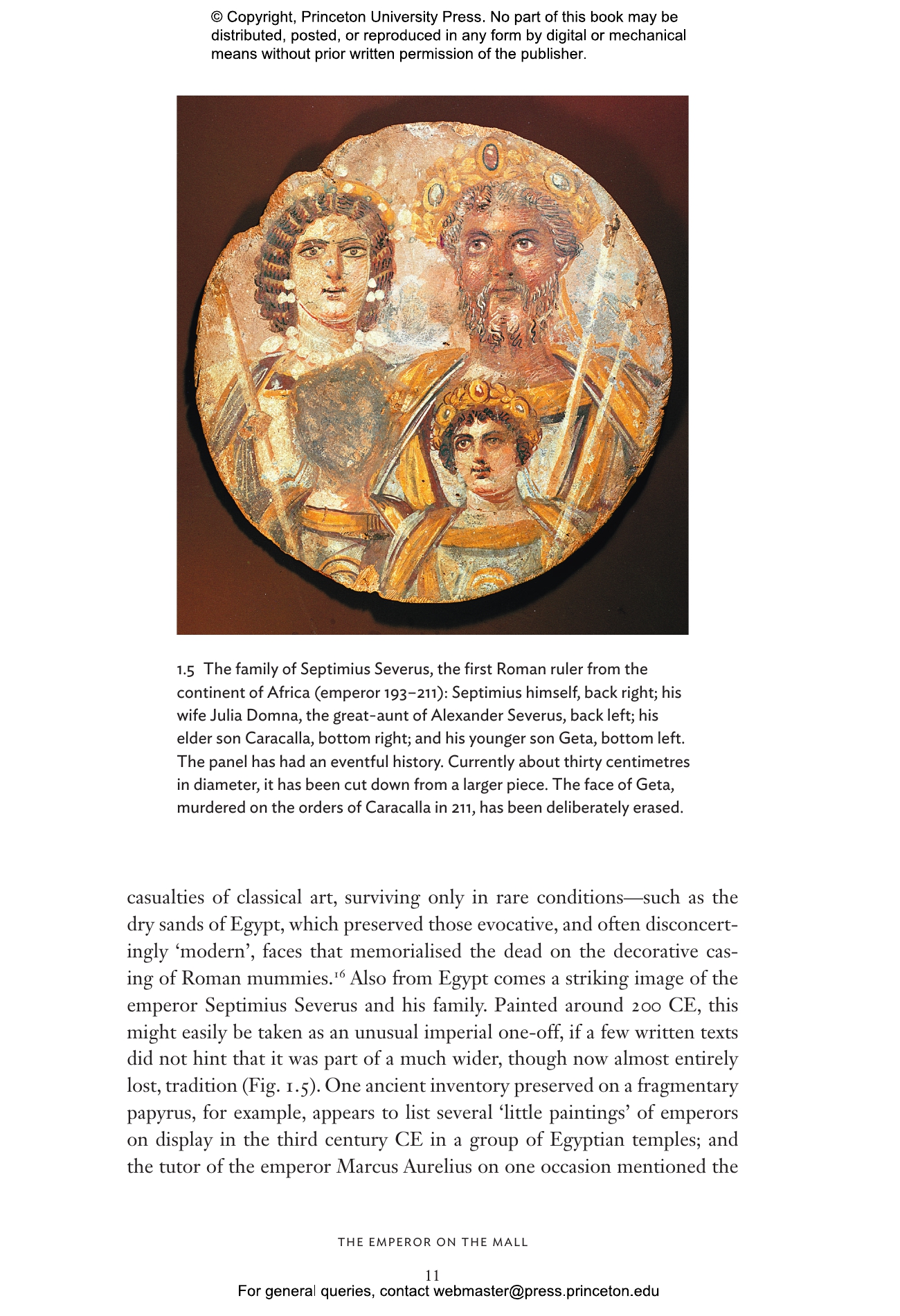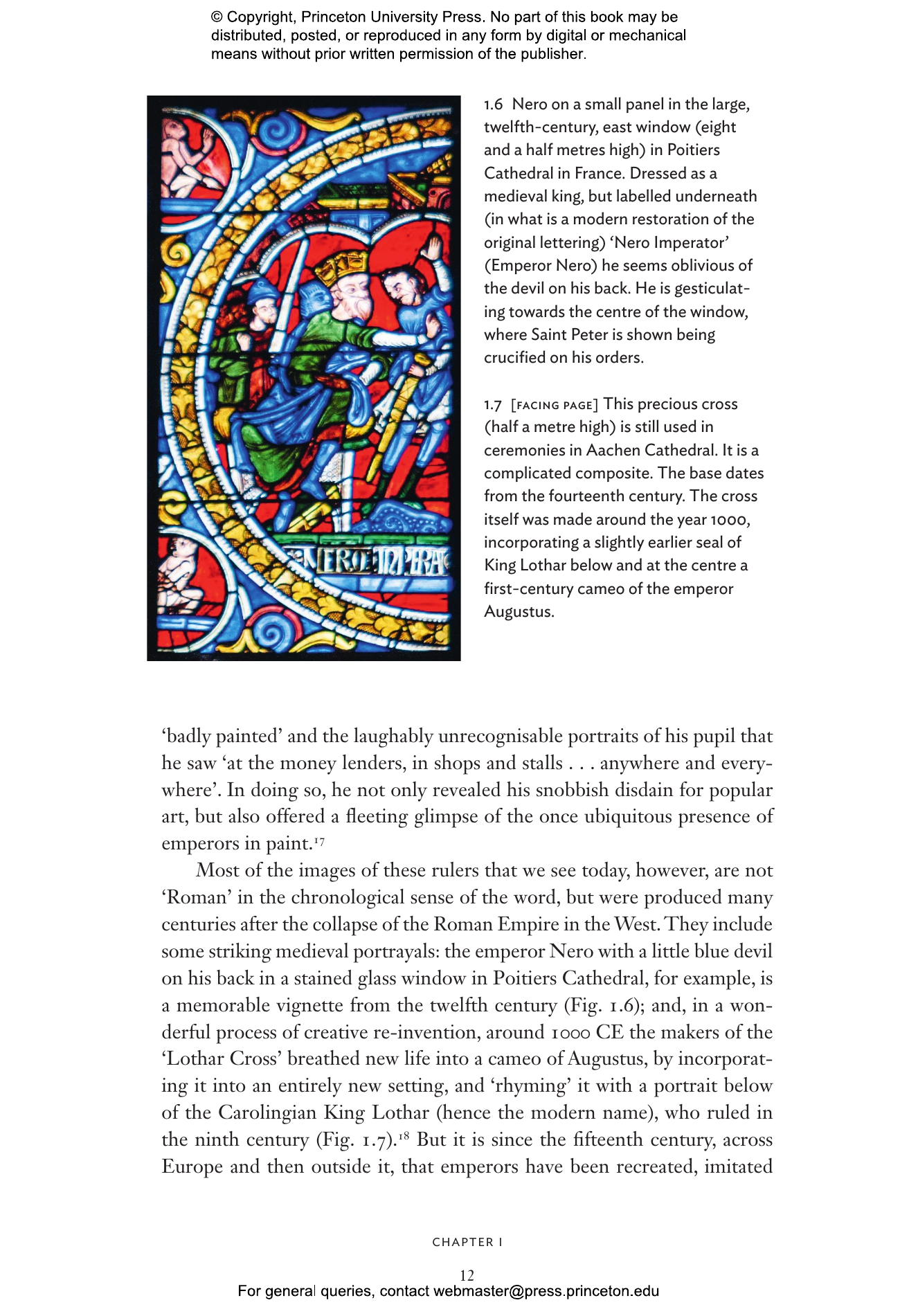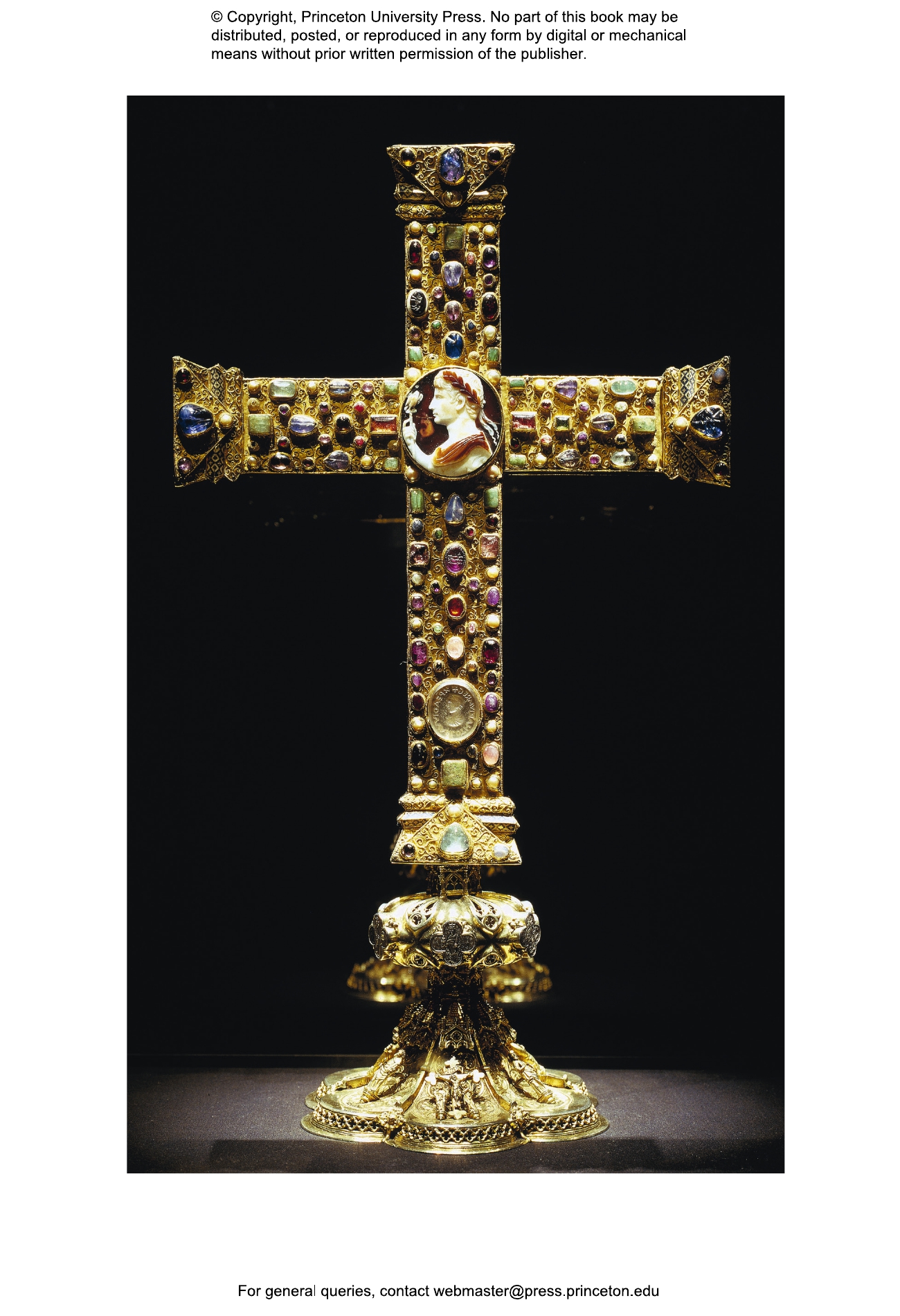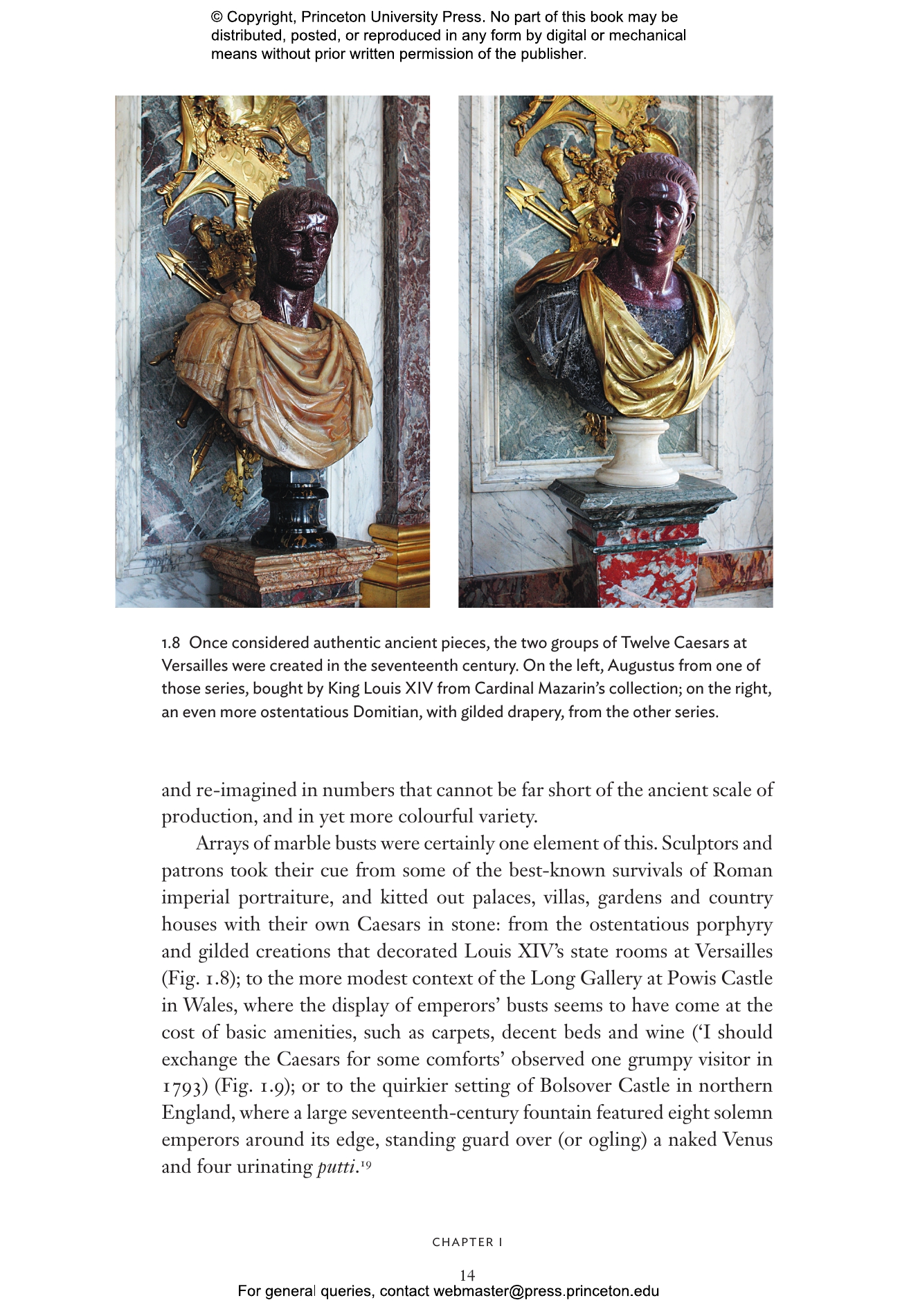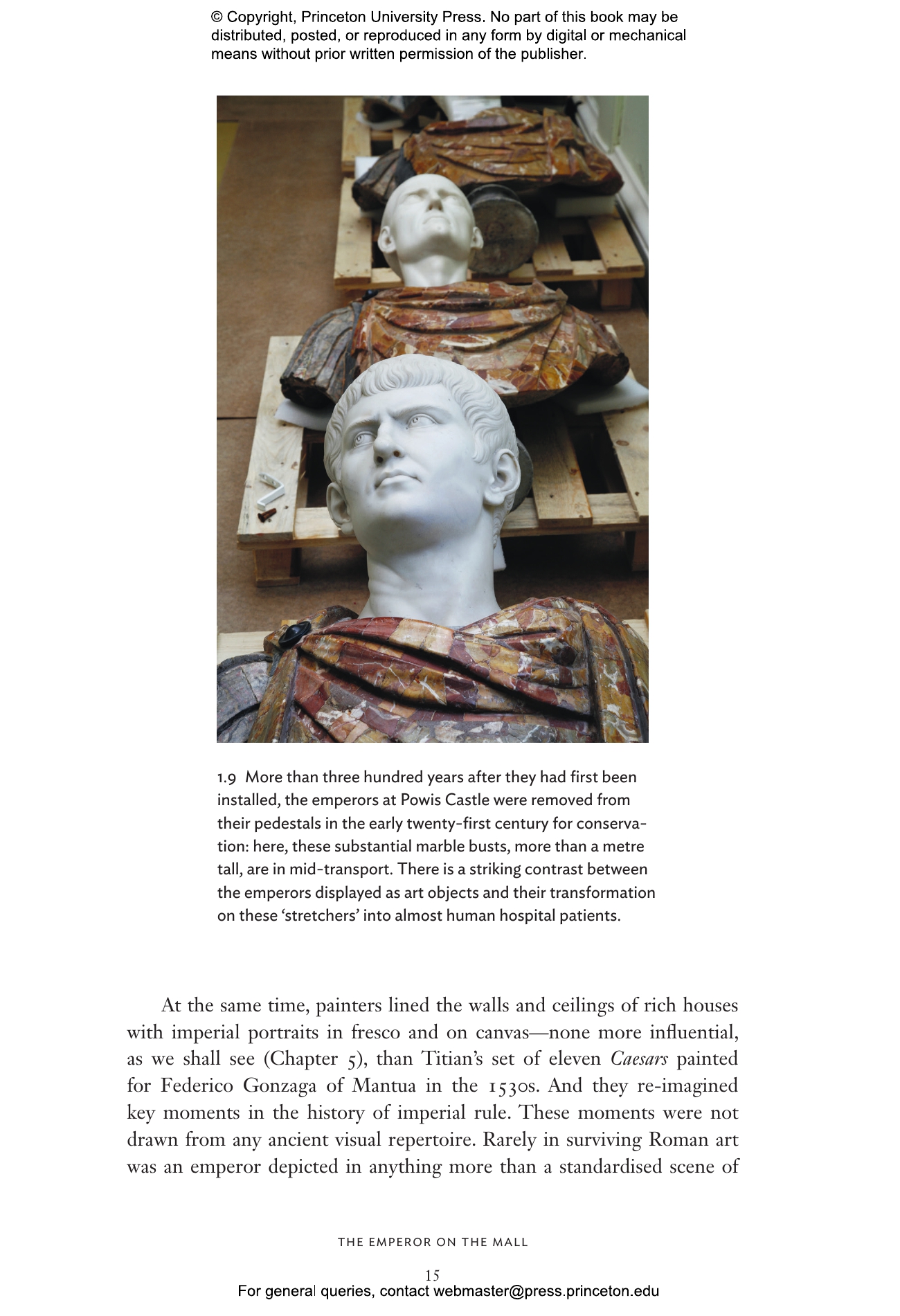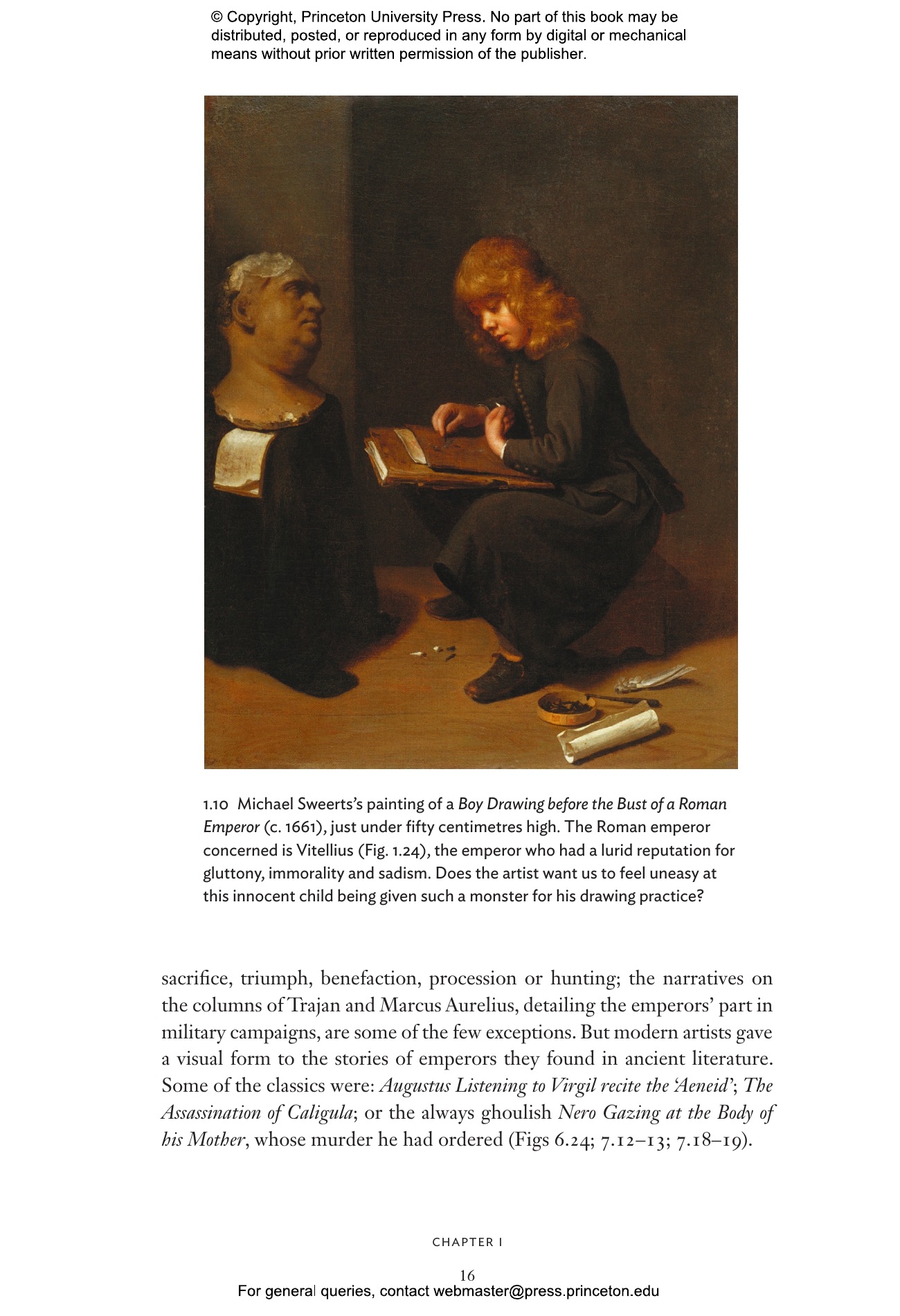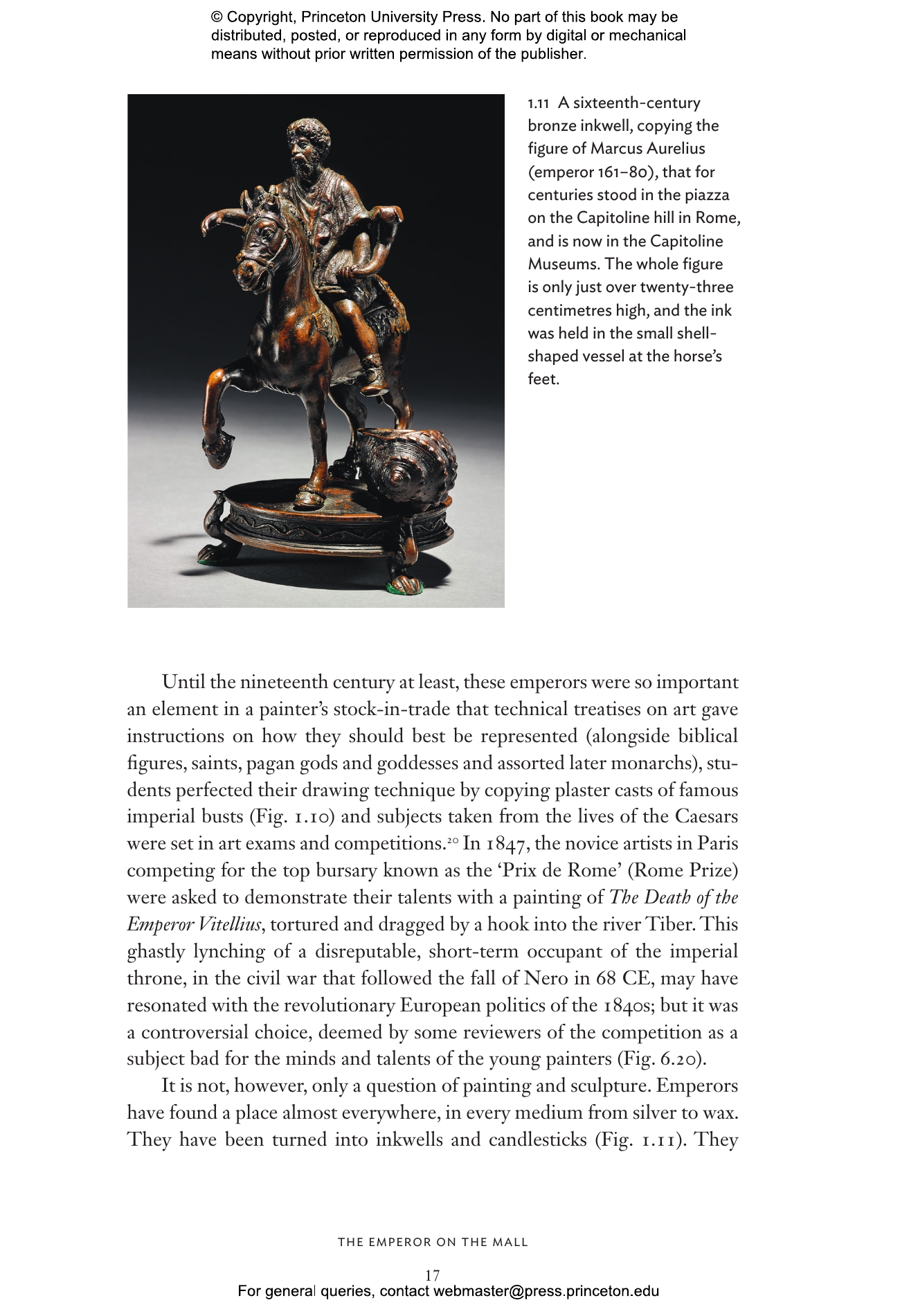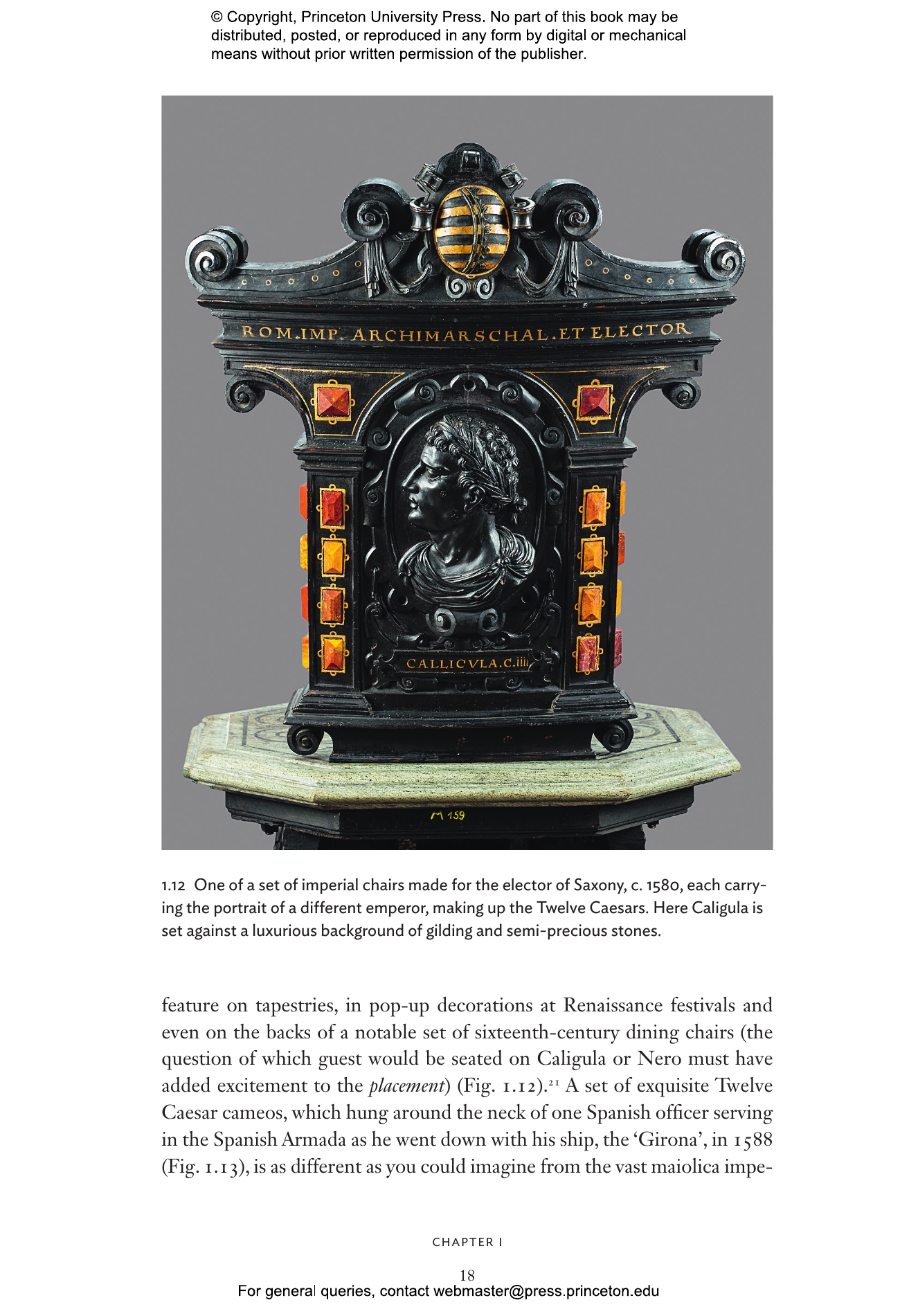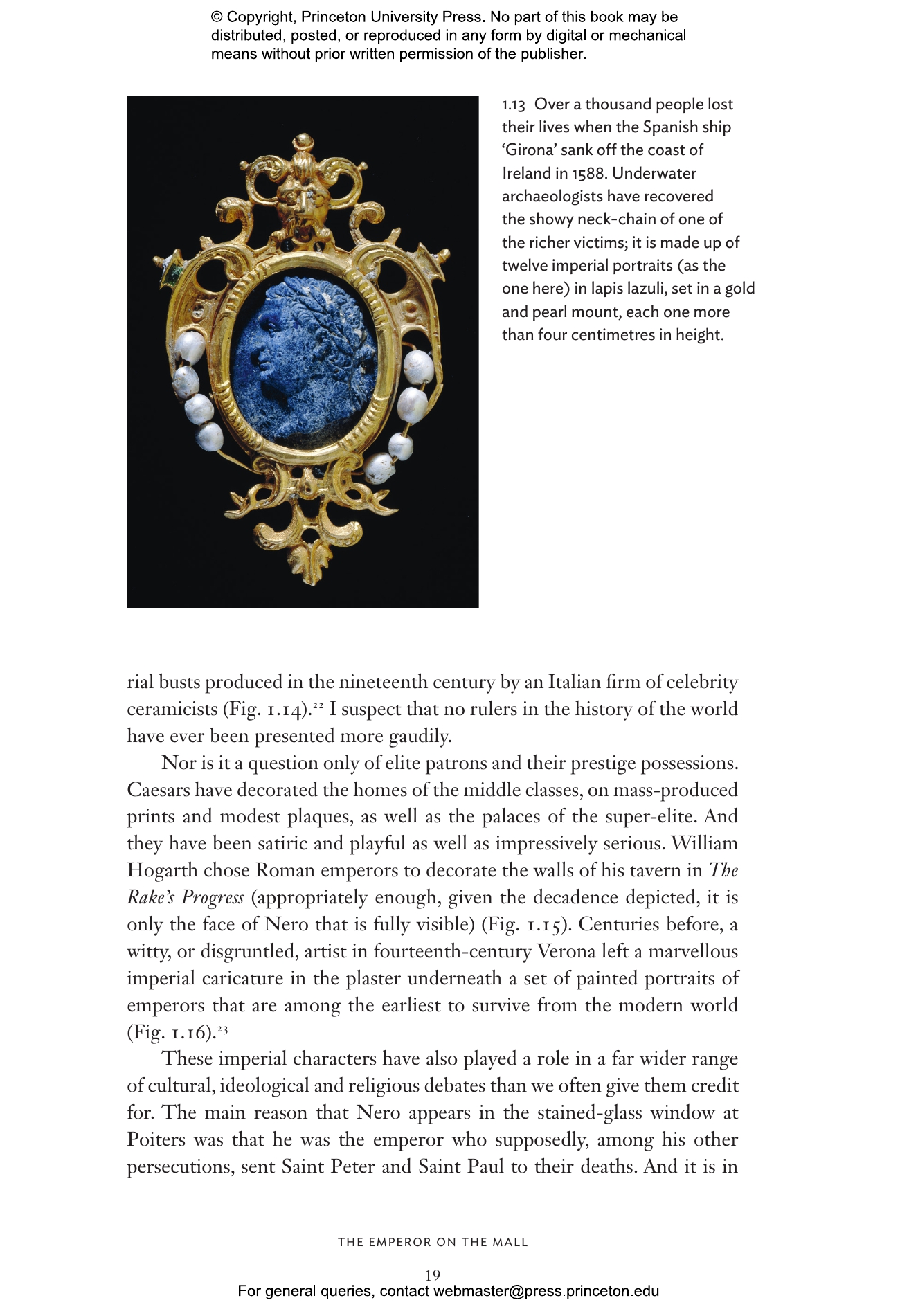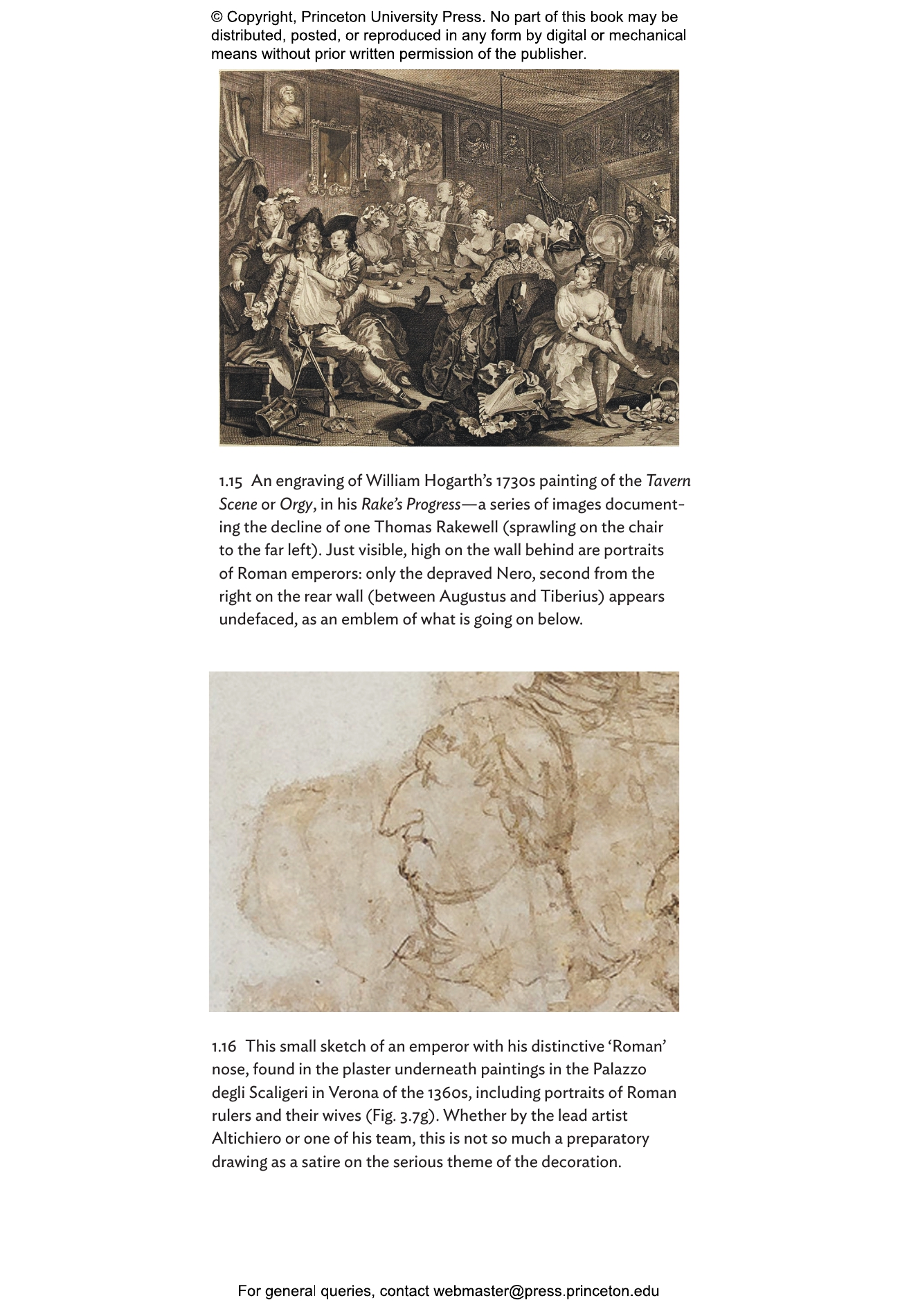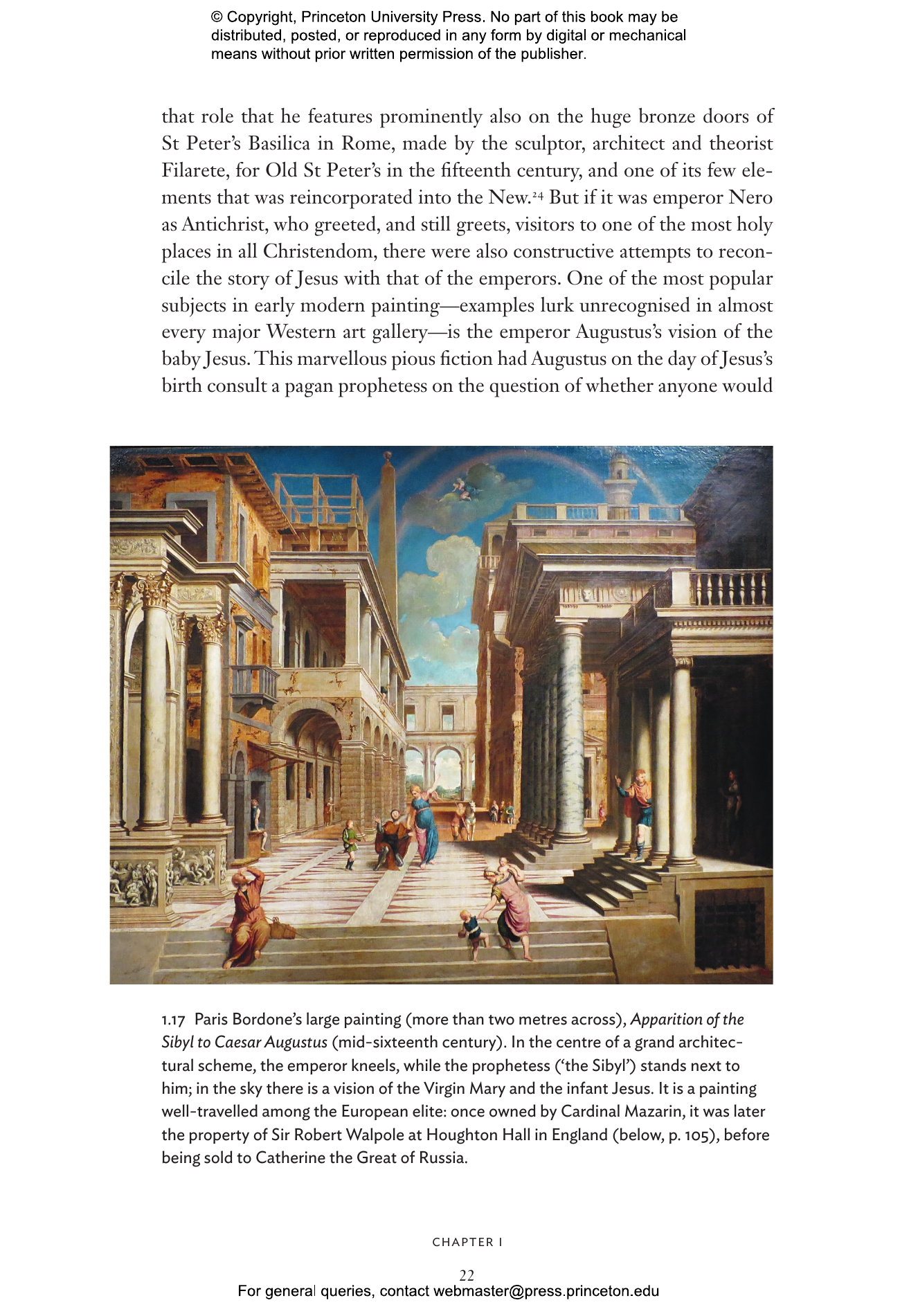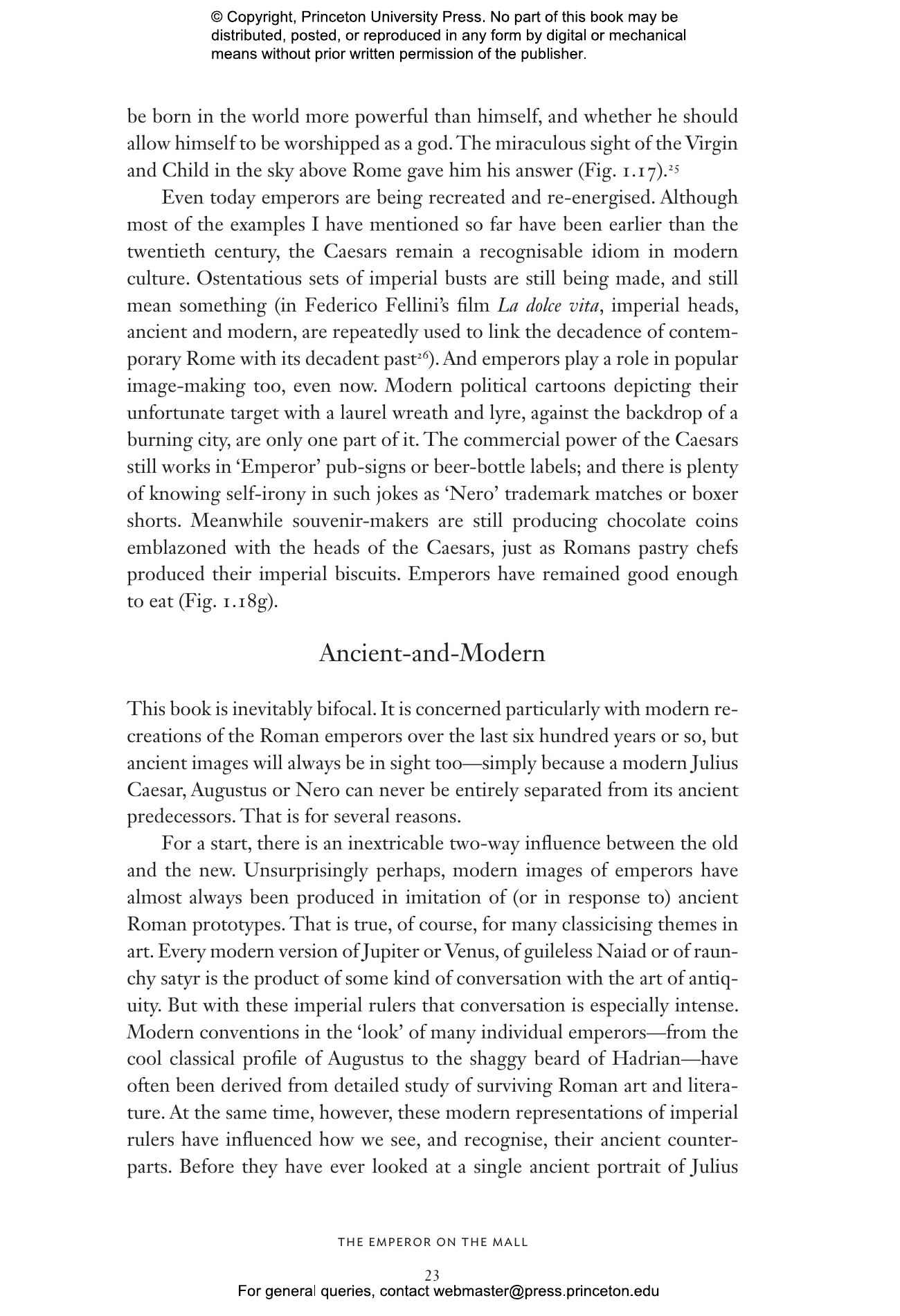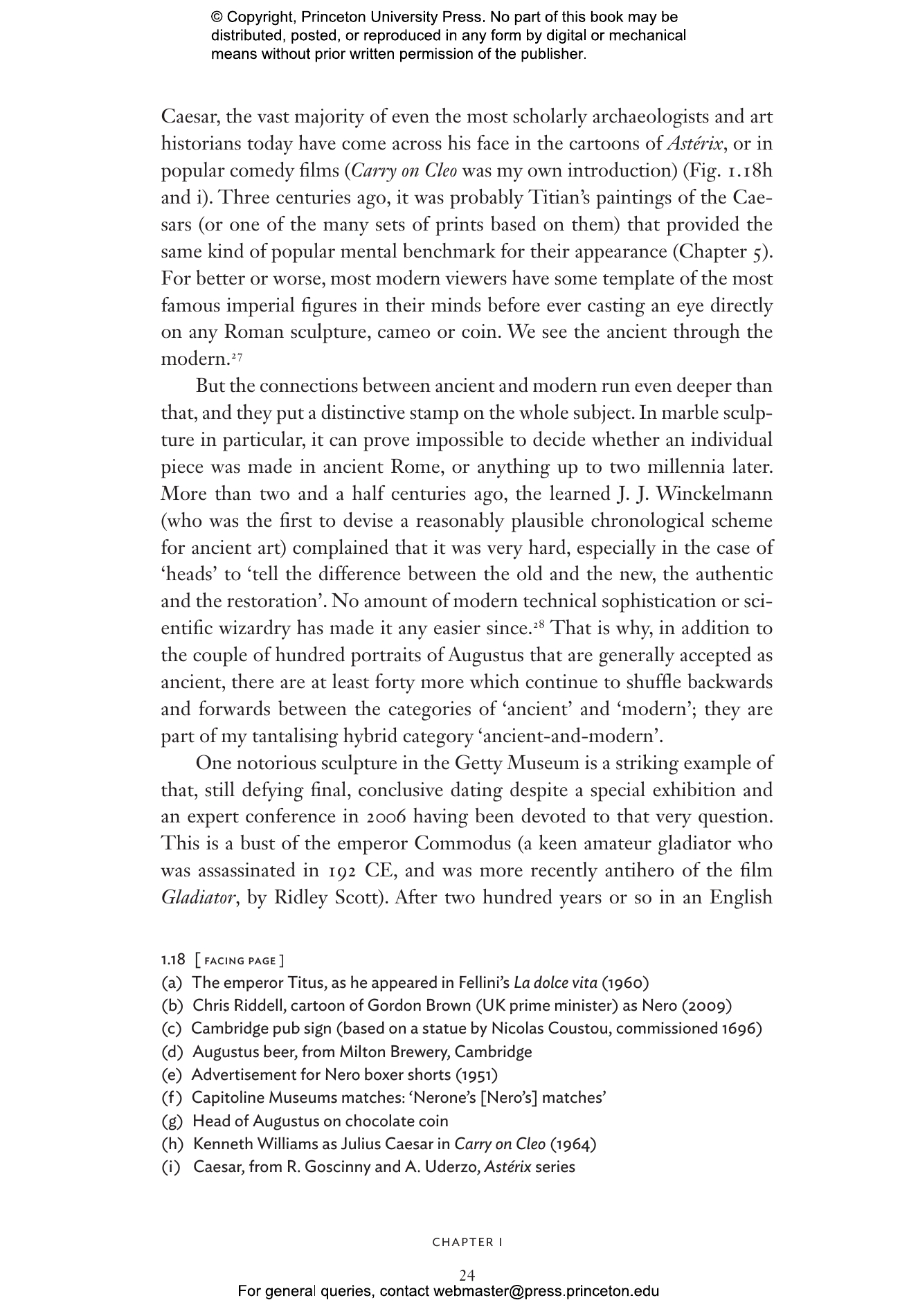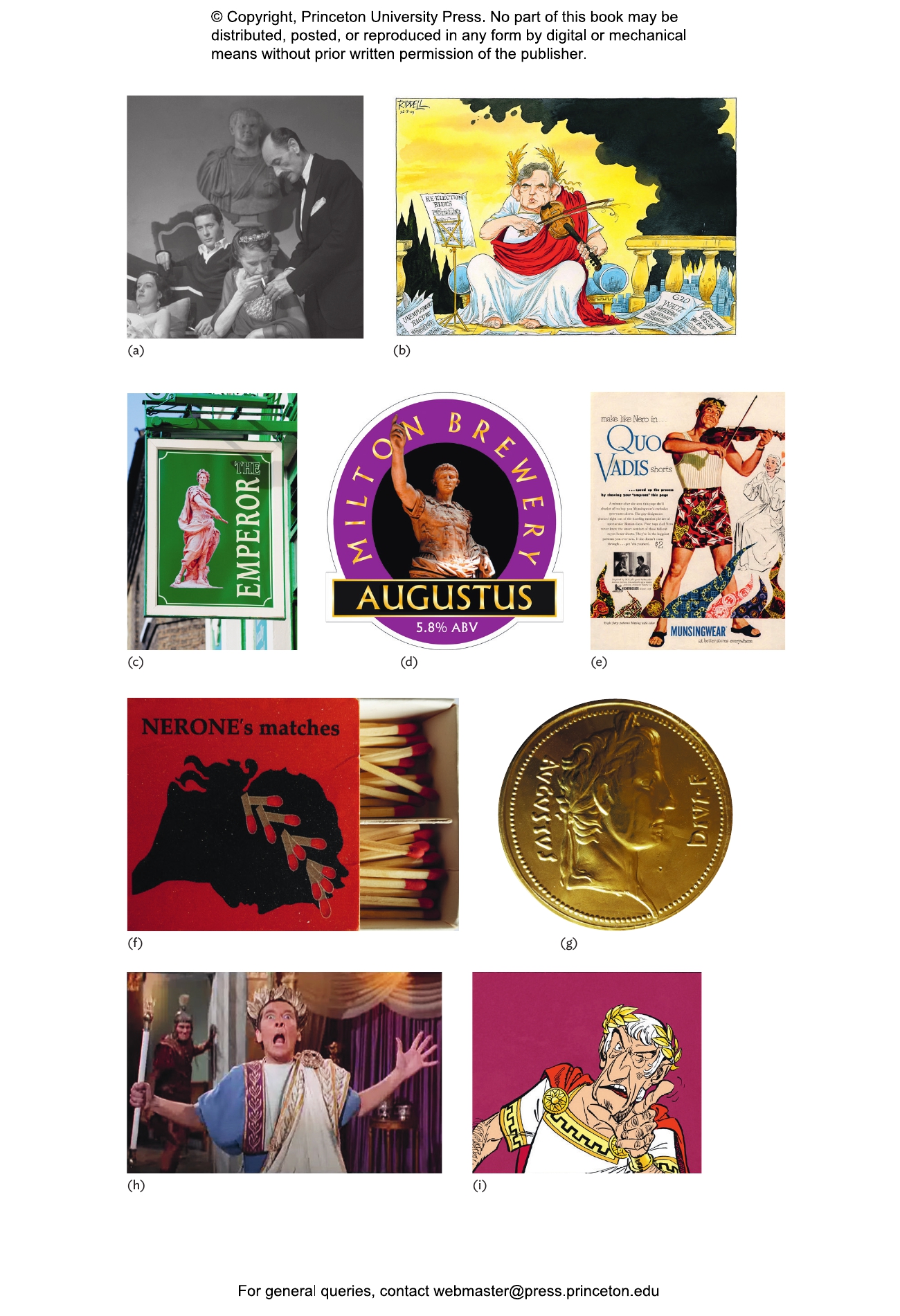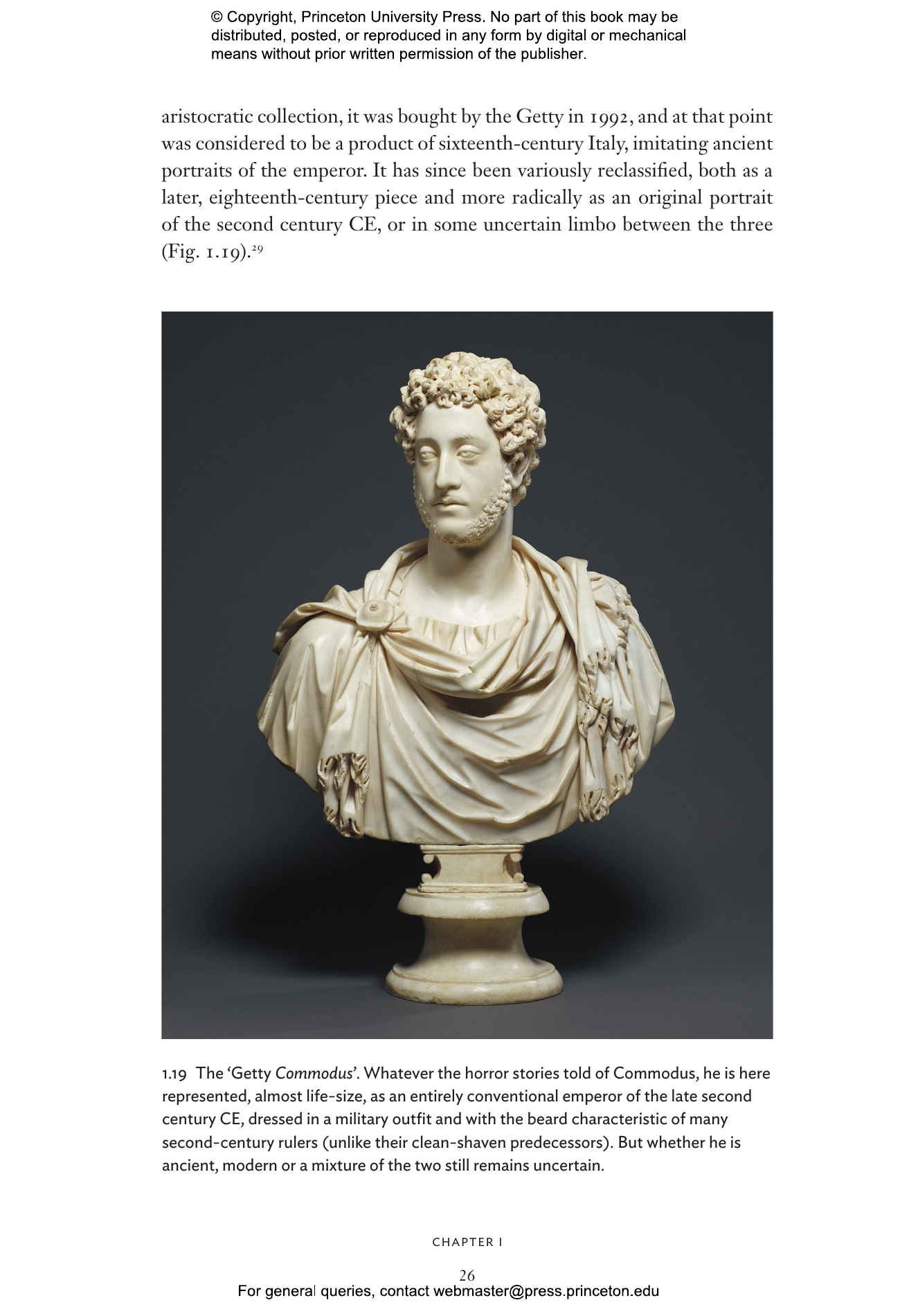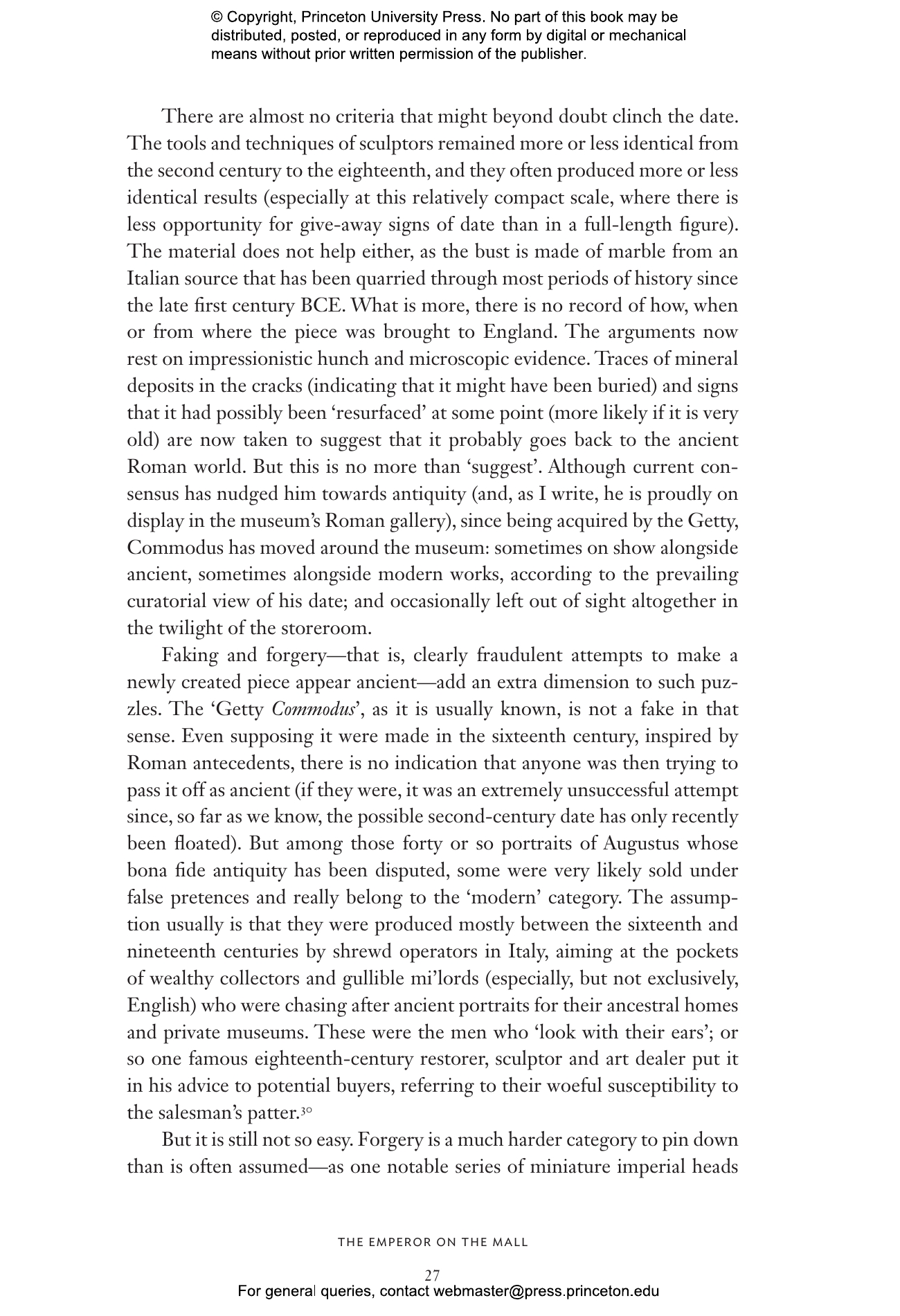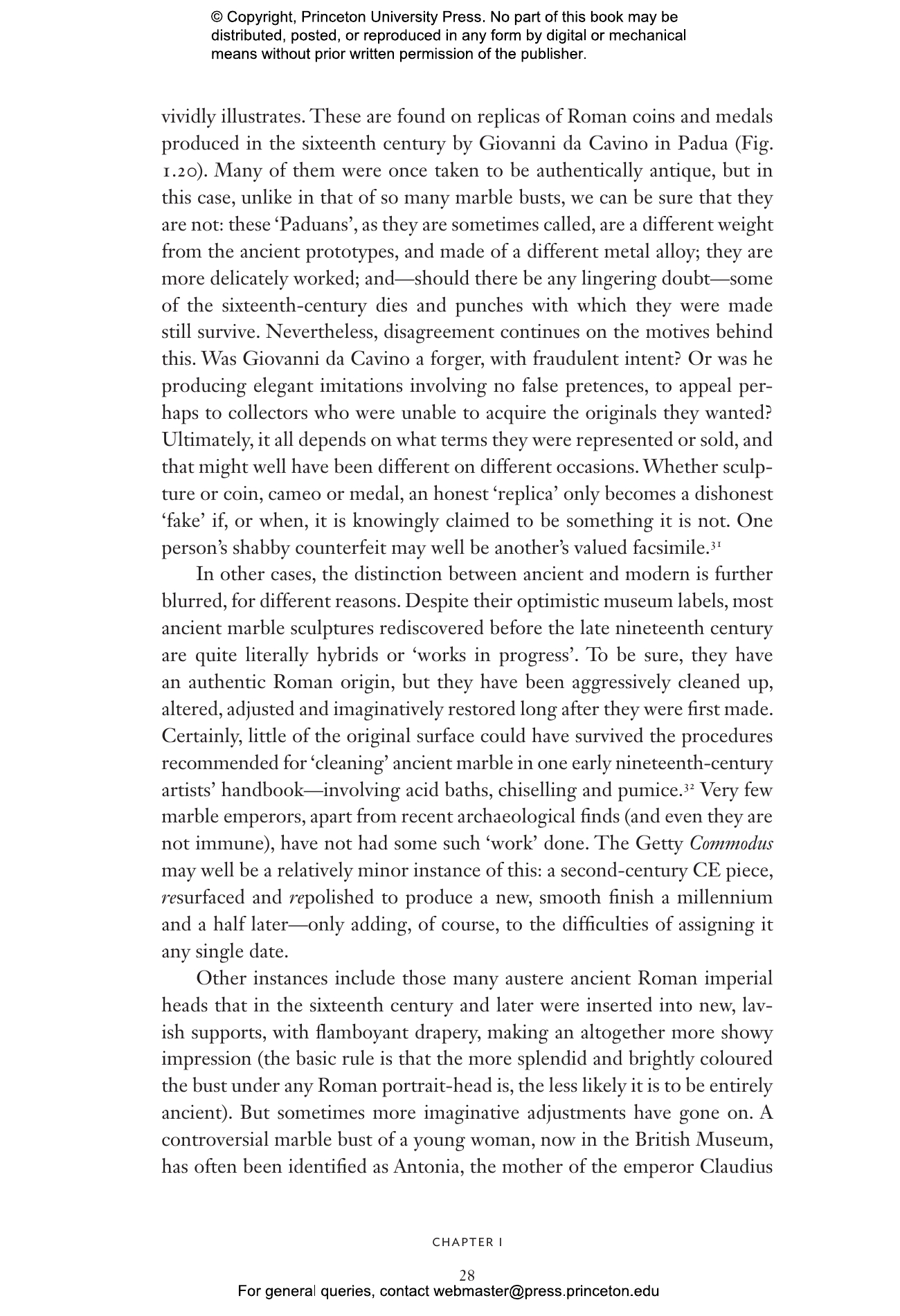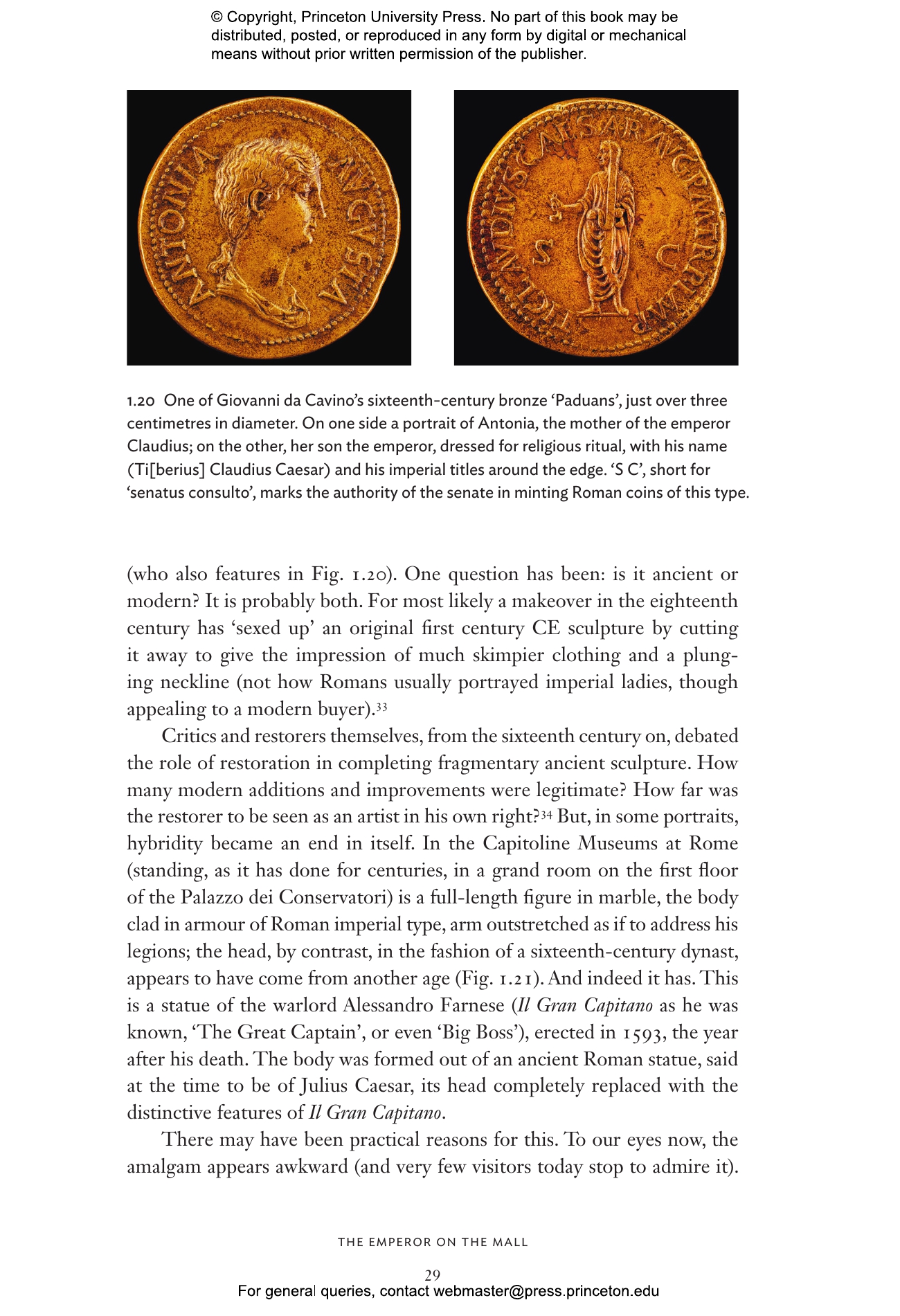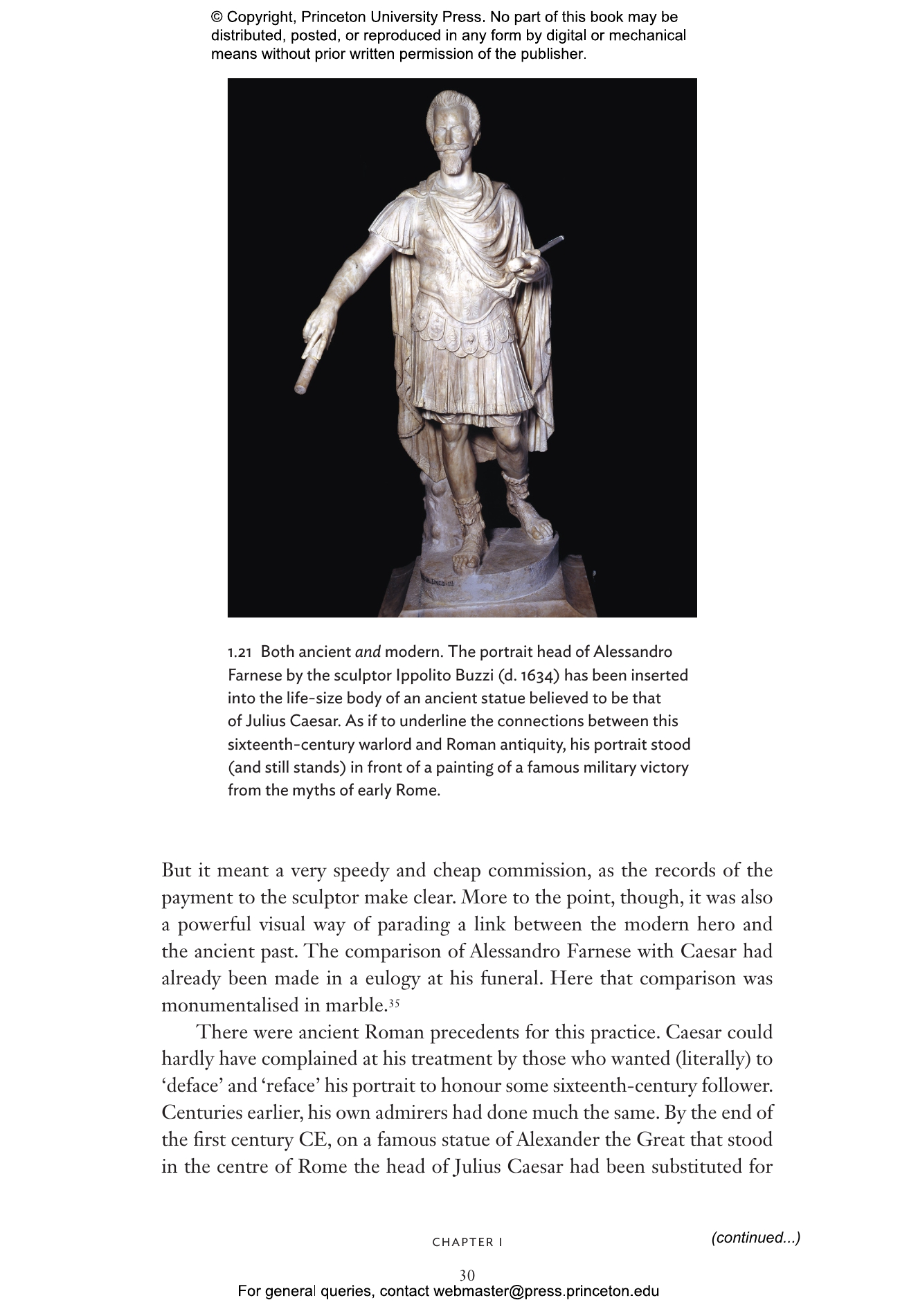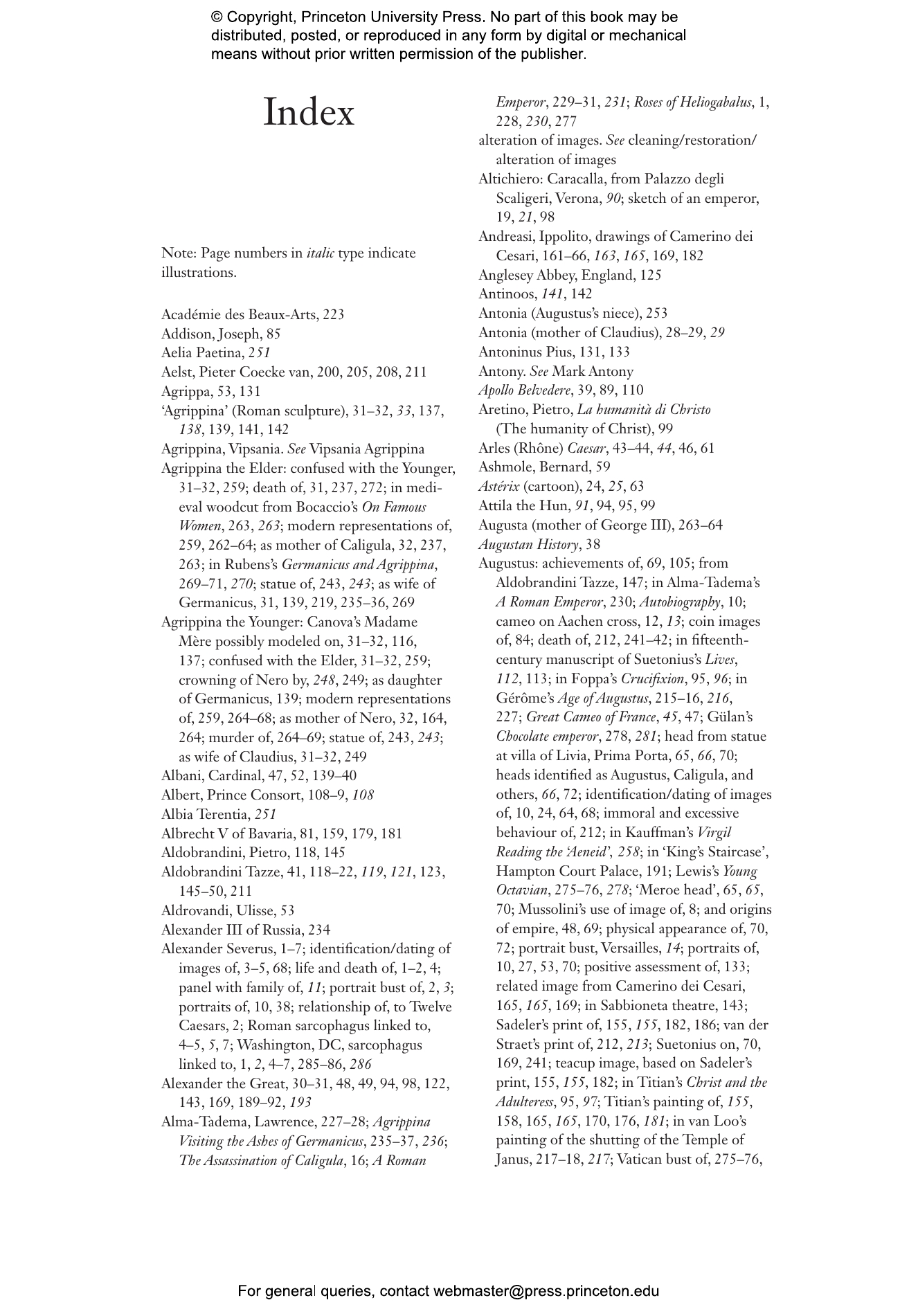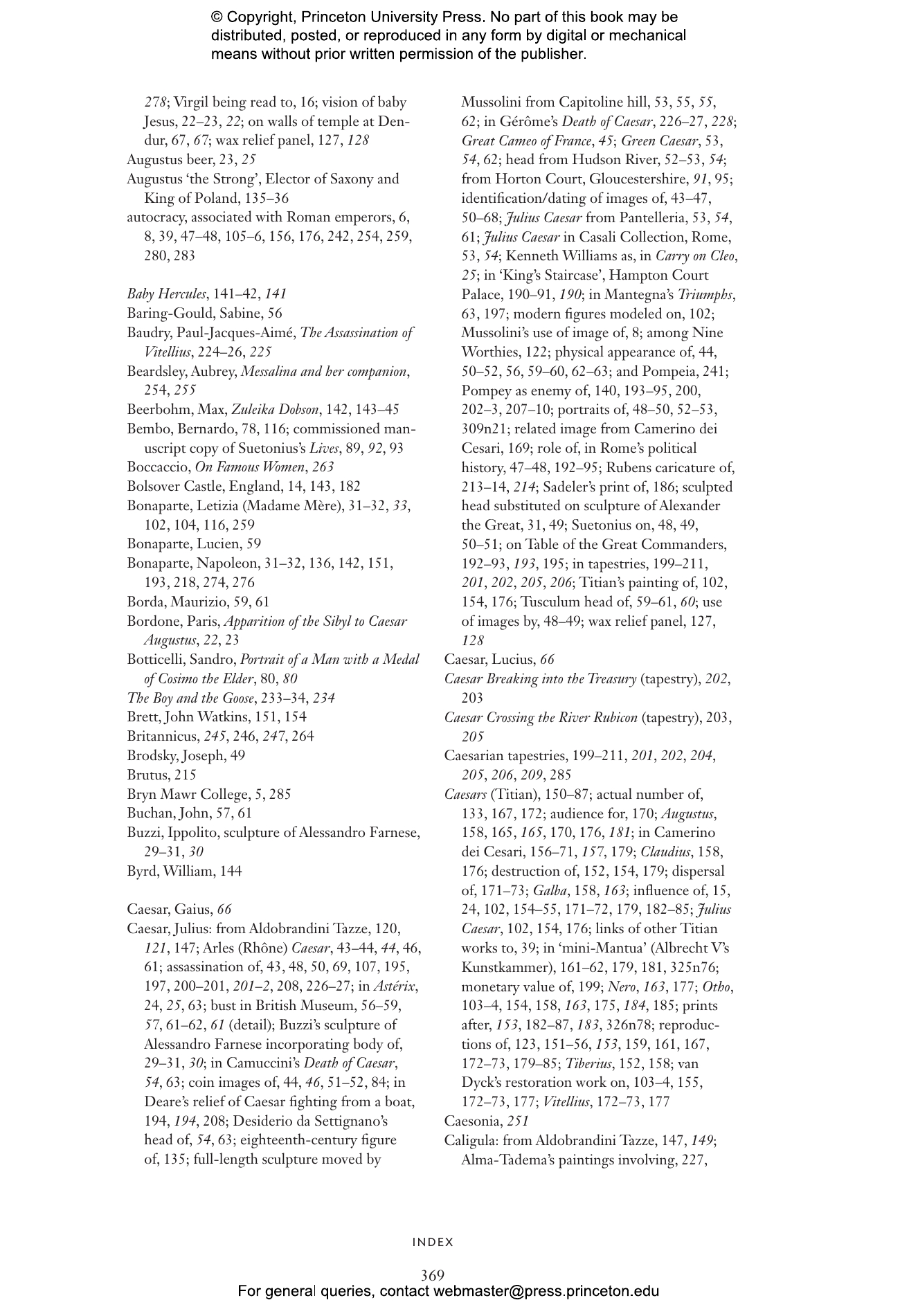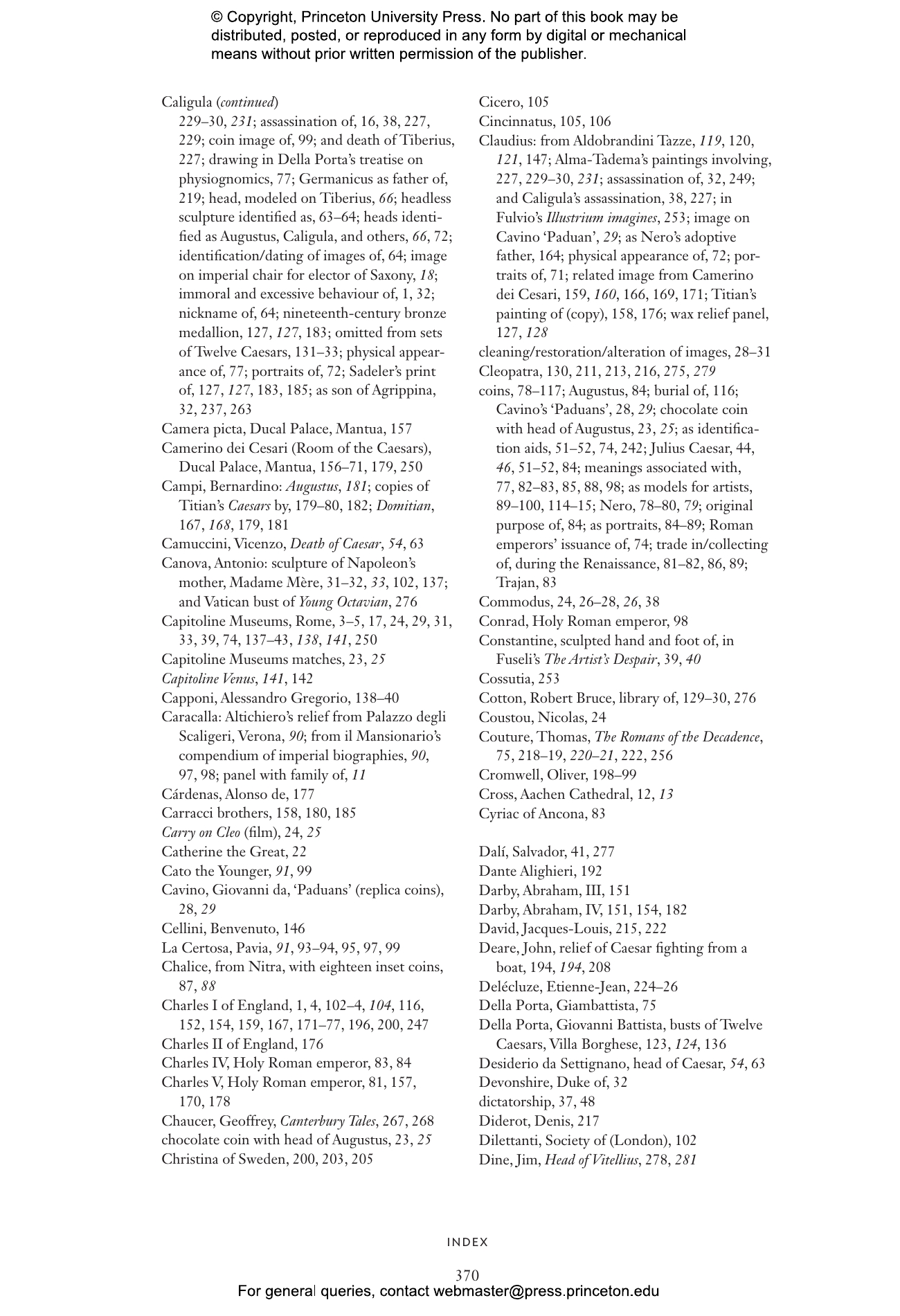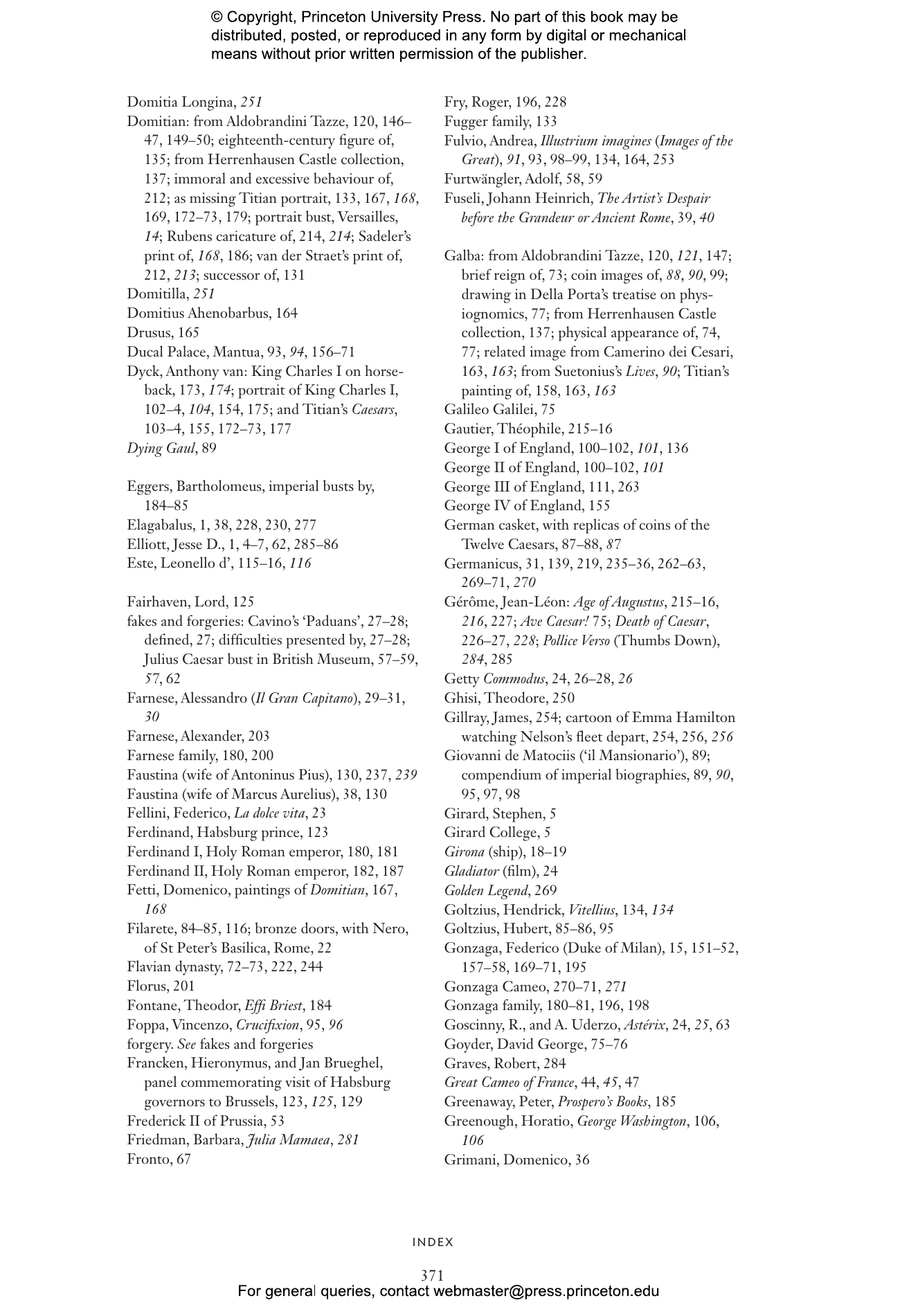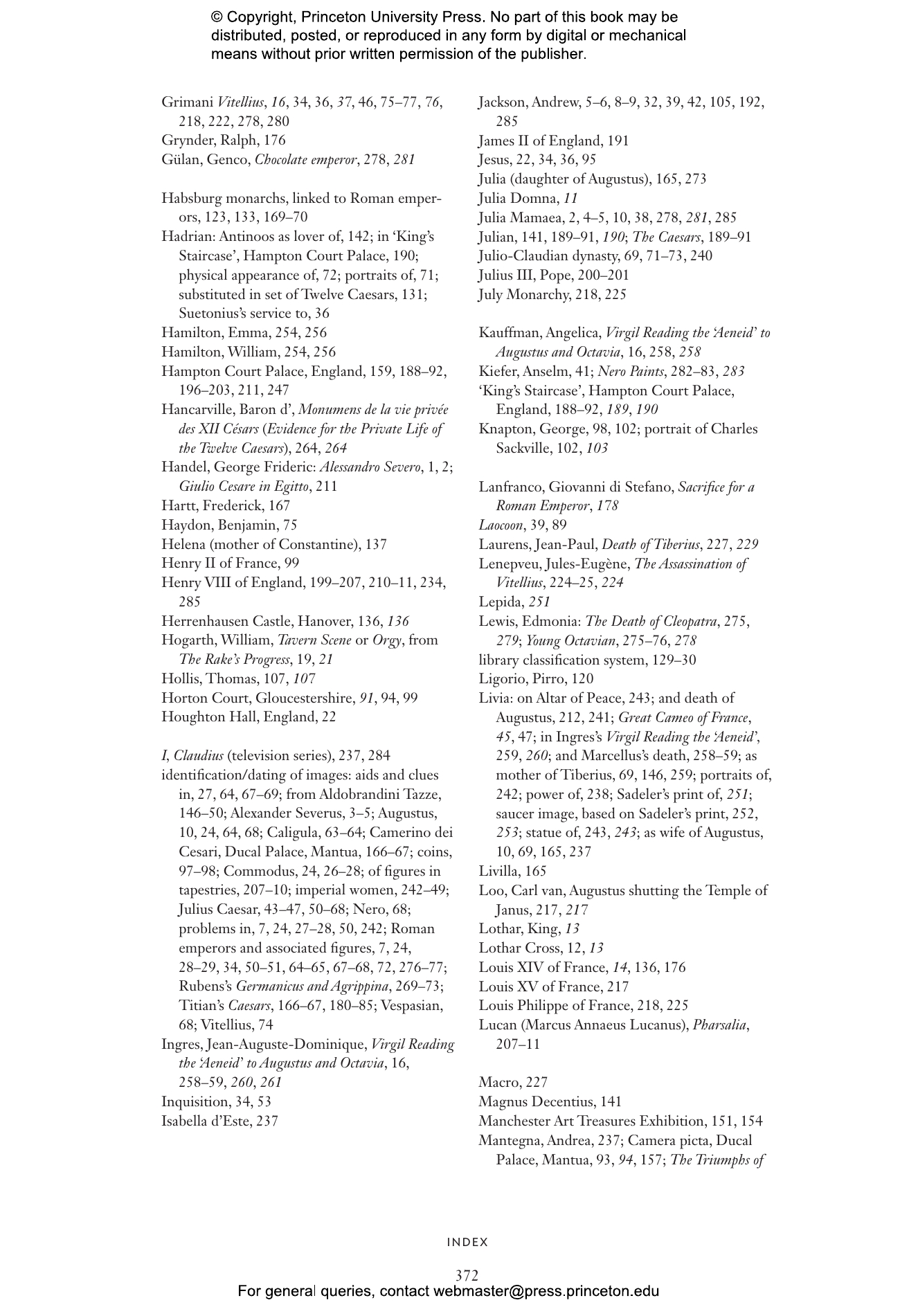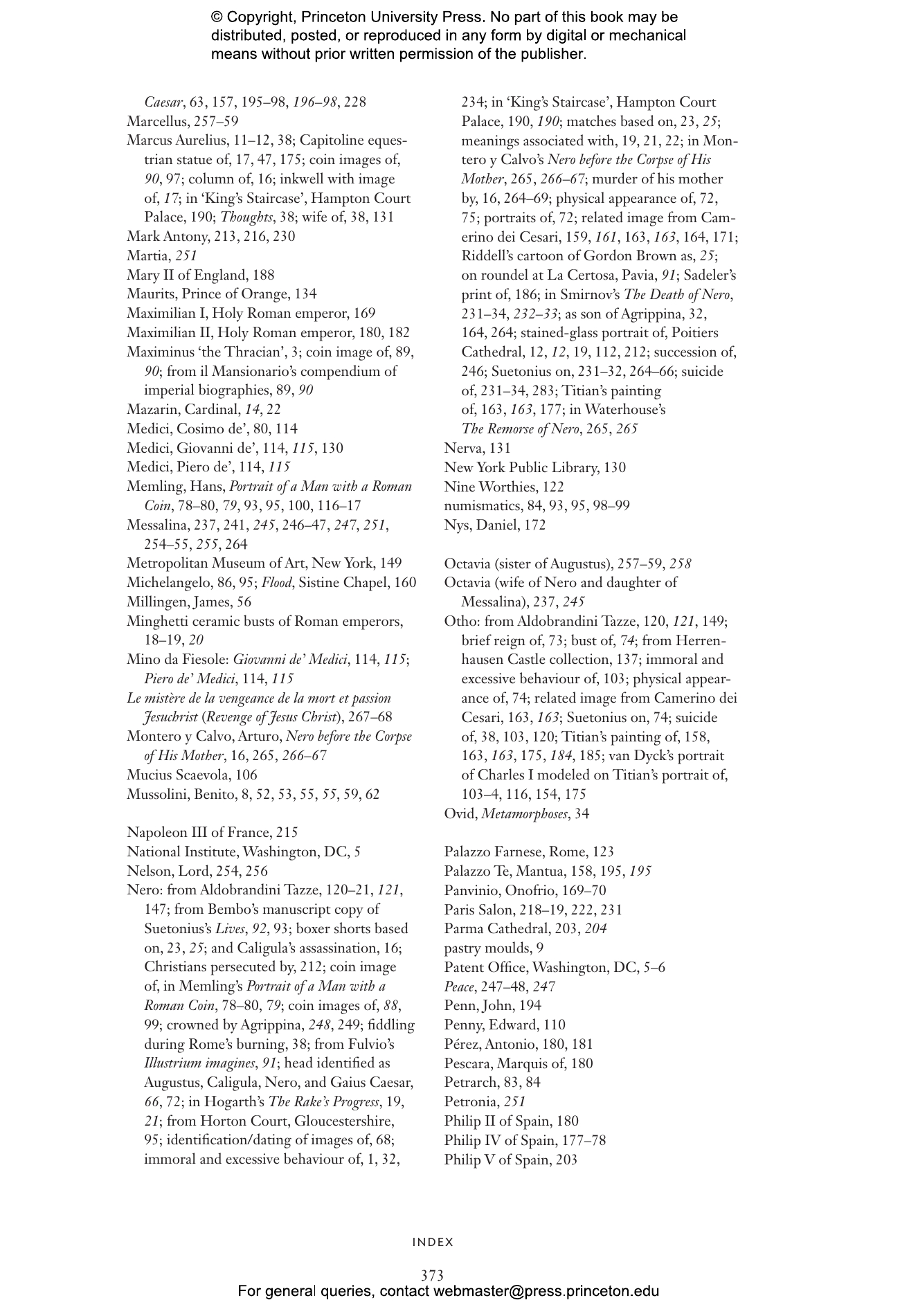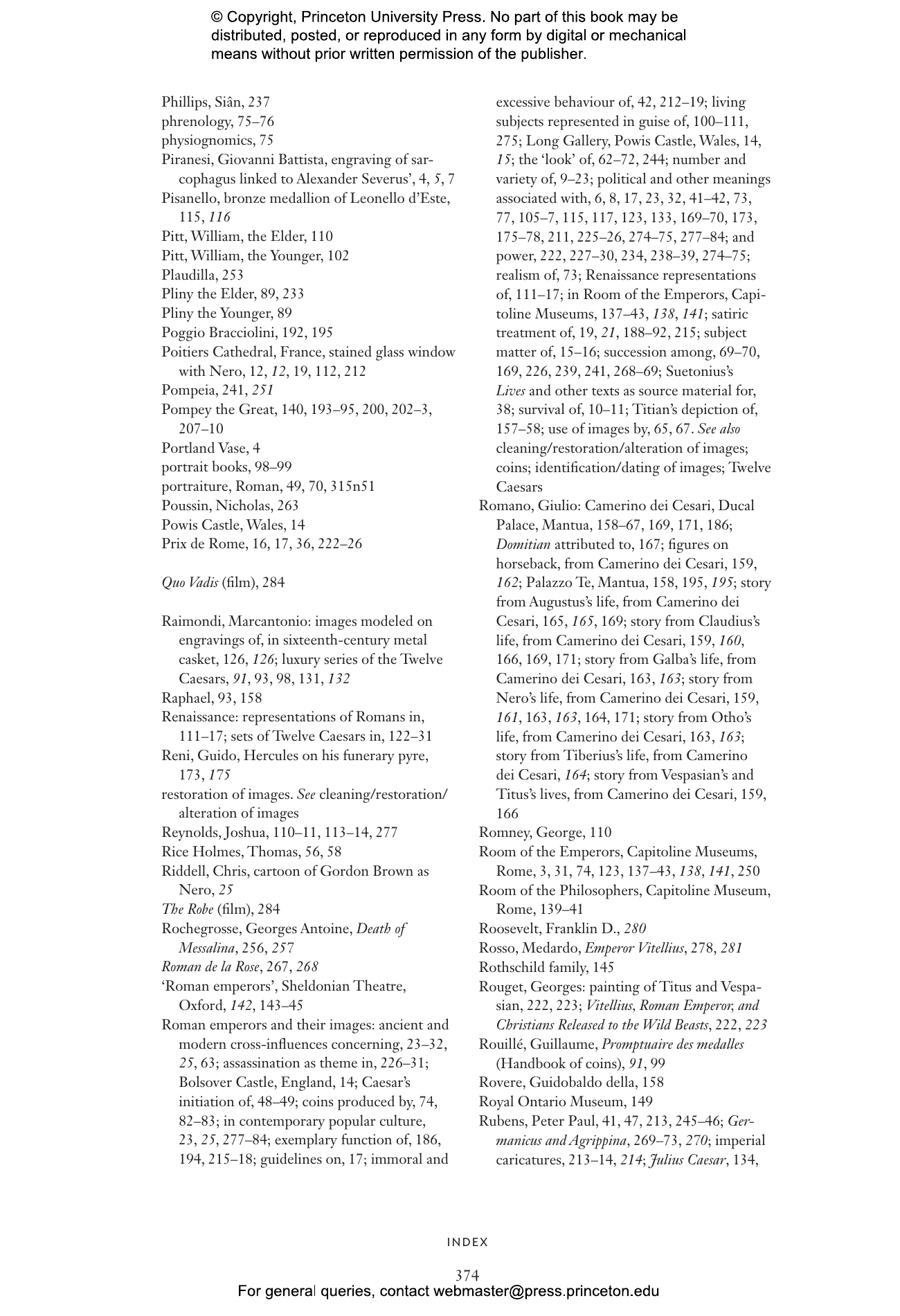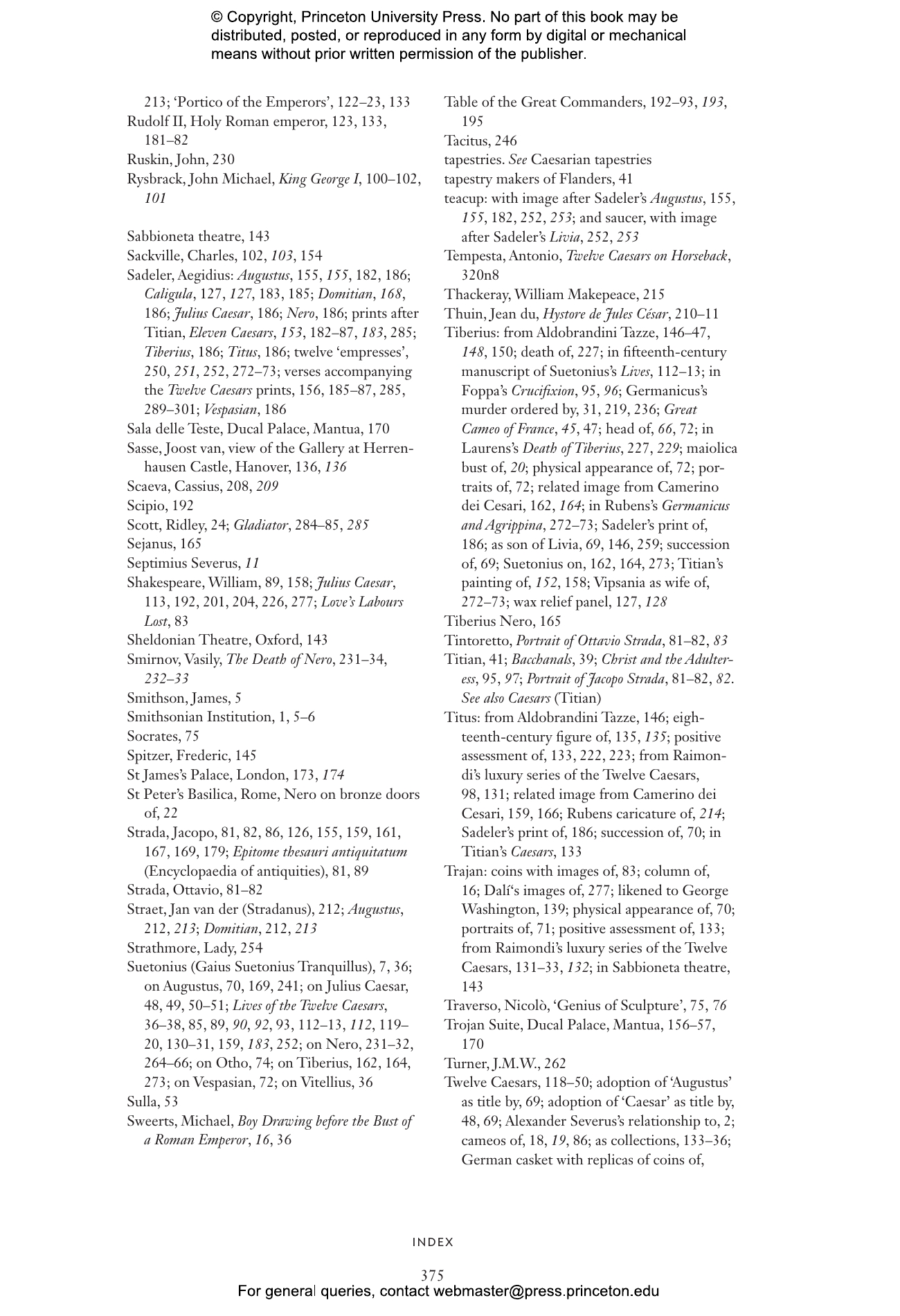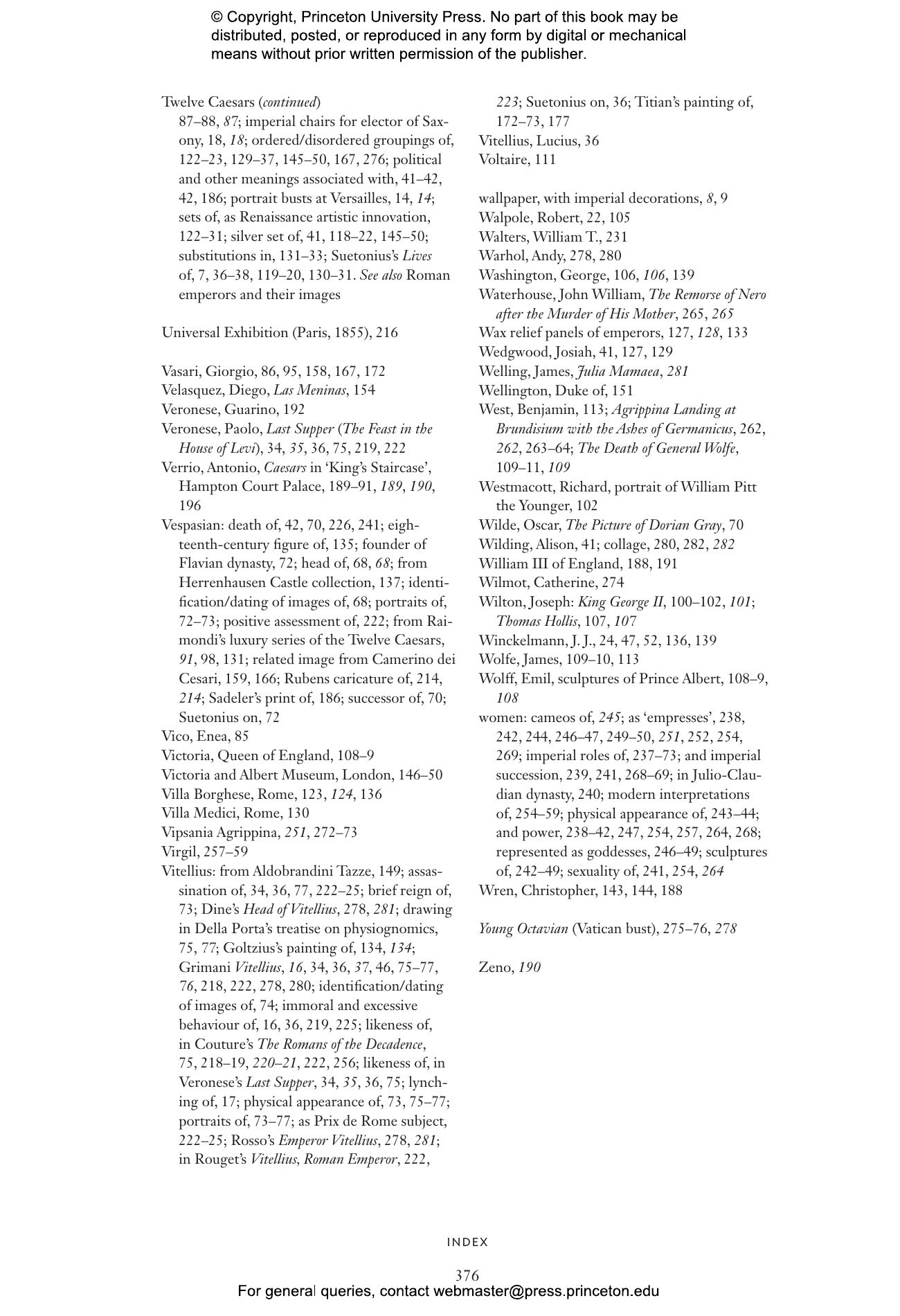"What better escape from the woes of our present day than rolling around in the intrigues of the Roman Empire? Naughty Caesars! Pictures too! Avidly I plunge in!"—Margaret Atwood
"A mesmerizing read."—Michael Dirda, Washington Post
"This deeply researched account explores how Roman art has shaped the Western world’s understanding of power for two millenniums, from ancient Roman imperial portraits to the work of the 19th-century American sculptor Edmonia Lewis."—New York Times
"Beard, a prolific author and a distinguished classical scholar, brilliantly describes the ways in which images of Roman emperors have influenced art, culture and politics for two millennia. . . . Twelve Caesars is a masterly demonstration of scholarship in a variety of fields, from republican Roman politics to Renaissance tapestry to contemporary British collage. Again and again, Ms. Beard gives us unexpected insights. . . . Twelve Caesars is wonderfully readable, with graceful prose and witty comments along the way."—Barry Strauss, Wall Street Journal
"This thoroughgoing survey examines the relationship between ancient imperial imagery and the modern visual imagination. . . . With handsome illustrations of coins, canvases, frescoes, and teacups, Beard brings the prestige and power of these emperors’ half-invented faces into tighter focus."—The New Yorker
"Twelve Caesars is fascinating and not only because its author writes so engagingly. Many years in the making, the world into which it will be born is not quite the same as the one in which it was conceived. Its preoccupations—essentially, it’s about the way that images of Roman emperors from Caesar to Domitian have influenced culture across the centuries—are suddenly and newly of the moment in a Britain that has become completely fixated with statues."—Rachel Cooke, The Observer
"A fantastic new book."—Tom Holland, The Rest Is History
"In [Beard's] work, the consumption of classical culture is as revealing as the culture itself."—Josh Spero, Financial Times
"[A] fascinating book, which embarks on a study of not just the Julio-Claudian dynasty of caesars made infamous by Suetonius and Robert Graves but also of their ubiquitous iconography—in statues, on coins, in paintings and sculpture. It’s an eye-catching field guide to these famous ancient rulers."—Christian Science Monitor
"Beard upends many of our assumptions by looking at how these rulers have been represented in art, from antiquity to the modern-day. It’s a clever and entertaining exercise in helping us reframe how we think about the distant past."—Darragh Geraghty, Irish Times
"[A] rich disquisition on the Caesars’ visual representation. . . . [Twelve Caesars is] handsomely illustrated and brightly ringing with Beard’s enjoyment and scholarship. . . . Beard shows the joy of classical texts, and how they are the ultimate resource when visual art fails to be comprehensible to us."—Hermione Eyre, The Spectator
"[Twelve Caesars] abounds in expert and keen-eyed readings of Roman imperial images, with insights into the meanings they might have held for those who displayed them. . . . [Beard’s] insights are always original and her lively, cheeky prose style always compelling."—James Romm, Daily Beast
"Beard has written a fascinating book, one to browse happily. It sparkles with ideas, many of them characteristically provocative. Pictorially it is a sheer delight. As for the question of attribution or misattribution, well, you can read this delightful book in the spirit of a detective."—Allan Massie, The Scotsman
"Beard provides a masterclass for art historians and classicists on the challenges of interpretation and the potentialities of meaning in this neglected area of classical studies, so important to elite visual power politics between the 15th and 19th centuries."—Simon J. V. Malloch, Literary Review
"Beard wades boldly into muddy territory and emerges with a portrait of the emperors’ afterlives that is as vivid as the busts themselves. The book leaves little room for doubt as to how influential the role of later artists and buyers has been in adding muscle to the sinews of emperors passed down from the ancient world. The twelve Caesars are arguably among the finest inventions of posterity."—Daisy Dunn, The Critic
"A leading scholar as well as a writer of bestsellers, [Mary] Beard, as always, asks important questions. . . . [In Twelve Caesars,] she leads us through the best available evidence and delivers insightful answers in lucid prose accompanied by dazzling images. . . . A lively treatise on Roman art and power, deliciously opinionated and beautifully illustrated."—Kirkus Reviews, starred review
"Incisive prose and wit. . . . This lavishly illustrated volume will be accessible and interesting to a wide variety of readers; a must-read for anyone interested in classics or art history."—Library Journal
"A sumptuously illustrated, beautifully designed, gloriously rich work of history from the distinguished classicist with a lively literary voice, an extraordinary eye for telling detail, and a grand sense of humor. Twelve Caesars is a masterful, brilliant work of detection, a joy to read."—B&N Reads
"[Twelve Caesars] currently sits on my nightstand. . . . . I've been interested in power for quite a while: who has it, who doesn’t, how to acquire it and how to use it for the greater good."—Bernardine Evaristo, Elle.com
"With her reputation for viewing Roman history through a feminist lens, Mary Beard may be the most popular classicist in the world. . . . Focusing on images of power throughout the ages, from ancient Rome to the present, [Twelve Caesars] will only grow her fan base."—ARTnews Magazine
"[Beard] explores in fascinating and entertaining detail how the long-dead Roman emperors have lived on in the Western imagination, providing a rich store of moral and political exemplars to instruct, warn and mock their successors. . . . Beard provides instruction as well as entertainment."—Stephen Mills, Inside Story
"There’s lots of moments in this book that are surprising and very funny."—Andrew Roberts, BBC Radio Four: Start The Week
"A detective masterpiece of entertaining misattributions, reinterpretations, and blatant fakes. "—Eugenia Ellanskaya, Minerva Magazine
"From Beard’s reconstruction of Titian’s extraordinary lost Room of the Emperors to her reinterpretation of Henry VIII’s famous Caesarian tapestries, Twelve Caesars includes fascinating detective work and offers a gripping story of some of the most challenging and disturbing portraits of power ever."—Angela Crocombe, Readings
"An enthralling story of how images of Roman emperors have influenced art, culture, and the representation of power for more than 2,000 years. . . . Drawing on a wealth of research, and a multitude of paintings and sculptures, Beard explores the importance of portraits in Roman politics and provides interesting insights into famous pieces of art. A fascinating book."—Canberra Weekly
"Beard is a consummate reader of images. One of her great strengths is the way she is constantly alive to the potential for images to misbehave. . . . A clever, witty, thought-provoking book."—Alastair J. L. Blanshard, Australian Book Review
"In discussing what the faces of imperial power looked like, Beard presents a fascinating detective story of changing identities told through a selection of historical artworks."—Lindsay Powell, Ancient History
"Engaging, erudite and enormously informative. . . . Beard’s fascinating book asks its readers to be curious about, and critical of, redeployments of the images of Roman emperors from the Renaissance in Italy to 20th-century America."—Marguerite Keane, America
"Beard’s style of investigation is often just as interesting as some of her findings. . . . 'Are we sure we know that?' is her consistent refrain. It’s a refreshing sort of intellectual humility—speaking confidently when an answer can be known, but also recognizing when caution is warranted."—Regina Munch, Commonweal
"[Beard’s] latest triumph. Twelve Caesars takes readers on a delightful journey through artistic representations of Rome’s emperors. . . .This book could be read at the beach, then cited in a dissertation."—Mikayla Barreiro, Comitatus
"An amazing, richly illustrated, book that reveals Mary Beard as a sleuth."—Scot McKnight, Christianity Today
"[A] welcome contribution to the study of representation of Roman emperors in early modern visual arts."—Miryana Dimitrova, Classical Review
"A tour de force of art and intellectual history."—James Corke-Webster, Greece and Rome
"Twelve Caesars by Mary Beard is a brilliant and engaging historical account of the lives of twelve Roman emperors. The book is a remarkable feat of scholarship that brings to life the personal and political complexities of these powerful men."—The F
"[Mary Beard] masterfully combines expert knowledge and scholarly rigour with a clear and engaging writing style. . . .An important book with much to say about the place of the Classical World in modern society."—Donald MacLennan, The Journal of Classics Teaching
“As this book triumphantly demonstrates, there is no one on the face of the planet better qualified than Mary Beard to guide us through the great hall of mirrors, labyrinthine and treacherous as it is, that separates us from the Twelve Caesars.”—Tom Holland, author of Rubicon: The Last Years of the Roman Republic
“Deftly weaving together past and present, this elegantly written book analyzes the allure of Roman imperial iconography from the early modern period up to the present day. Often reading like a detective novel, it focuses on the formation of a canonical group of twelve Caesars that were invented and reinvented, interpreted and reinterpreted, for purposes that varied from a simple lust for collecting to political self-fashioning.”—Patricia Fortini Brown, author of The Venetian Bride: Bloodlines and Blood Feuds in Venice and Its Empire
“An exceptionally well written and lively book, there is nothing like Twelve Caesars. The book is consistently informative and entertaining. The range of reference across art history from the fifteenth to the twentieth centuries, as well as in the author’s more expected arena of command in antiquity, is staggering and deeply impressive.”—Jaś Elsner, author of Roman Eyes: Visuality and Subjectivity in Art and Text
“Ancient Rome emitted a haze of distorting myth throughout all of later Western history. It was the task of most classicists to fight their way back through the intervening murk of multiple ‘Romes’ to the actual Rome. But Mary Beard, who has been a great fog dispeller from real Rome, knows that later ‘Romes’ were real to the cultures that harbored or dreamed them up. Thanks to her experience with TV cultural education, Beard is a superb visual teacher. A good example is this book’s chapter on later reverence for ancient coins. Nothing could be drearier than classical treatises on Roman coins, crowded with tiny black blurs on a page, so small as to seem indistinguishable until one takes up a magnifying glass to discern the imperfections of the minting process. Here one finds later creative uses of coins—as models for other works of art, or as set in brilliant jewelry, or as promoted by daft but wealthy collectors. What a relief.”—Garry Wills, author of Rome and Rhetoric
